Your Cart is Empty
Get Up To 35% OFF & Free Delivery
Get Up To 35% OFF & Free Delivery
Get Up To 35% OFF & Free Delivery
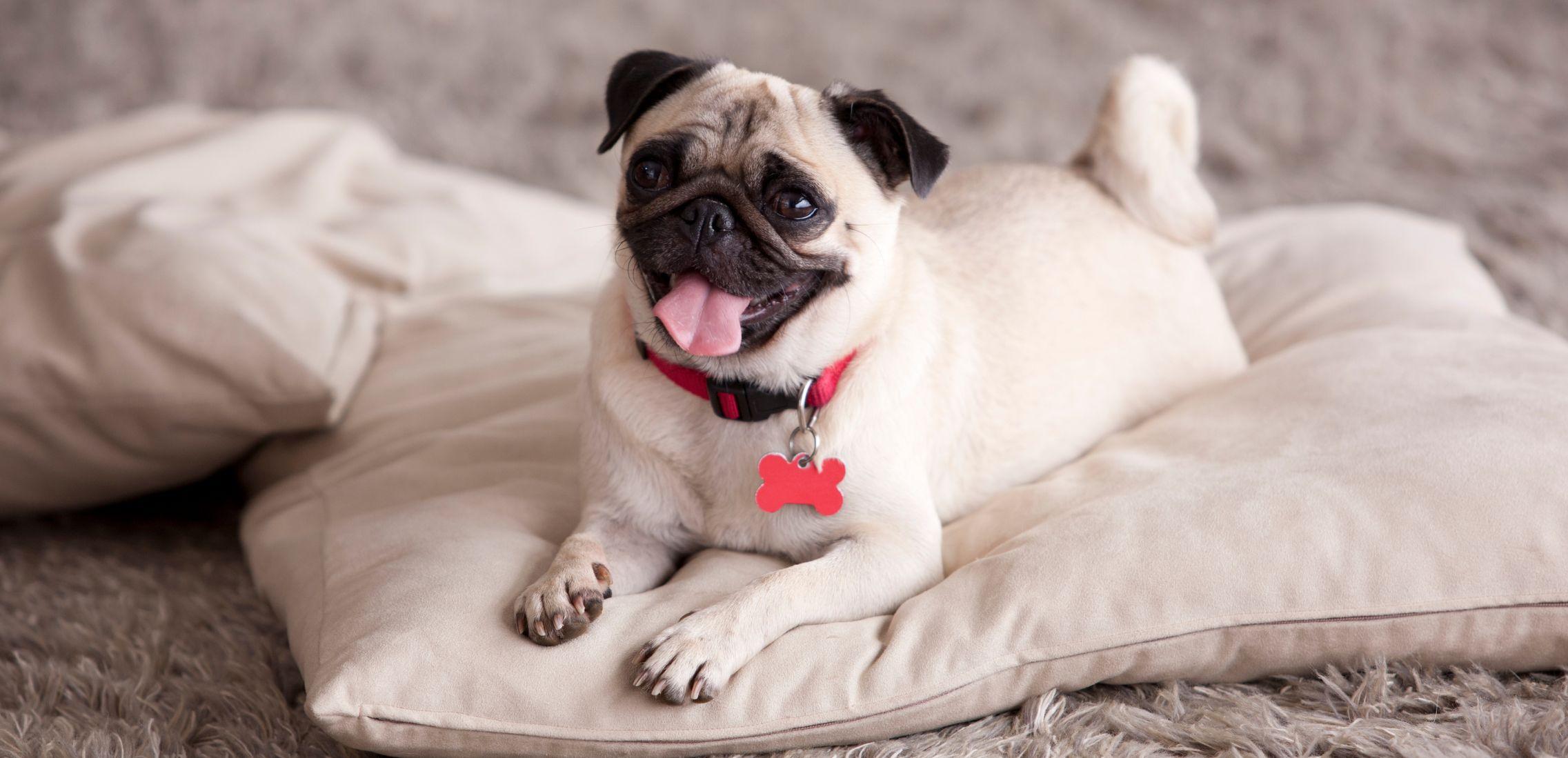
The small yet sturdy pug has become a household favorite due to their quirky look, sociable nature and family friendly pup status. Also a favorite of Chinese royalty throughout the Shang dynasty, these curly-tailed pig-like pooches are super sweet, endearing and love nothing more than hanging out with their humans on the sofa.
Pug dogs tend to be very chilled and laid back…but don’t let that fool you! They have a mischievous streak and are really smart, meaning they have the capacity to get up to all sorts of funny antics.
We are going to dive into the world of the Pug dog breed, getting up close and personal with these funny little guys, looking at their breed characteristics, grooming needs, possible health issues, as well as how to bring home a Pug puppy of your own.

Lifespan
13 - 15 years

Size
Toy

Weight
14 - 18 lbs

Height
10 - 13 inches

Colors
Fawn, Black

Size of home
Pugs are small in size and so would suit smaller homes or apartments. They are an extremely adaptable breed and so thrive in either the city or the country
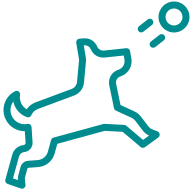
Exercise
Whilst playful, they tend to love the couch potato life - daily stimulative play and regular walks are essential for keeping your pug fit and healthy
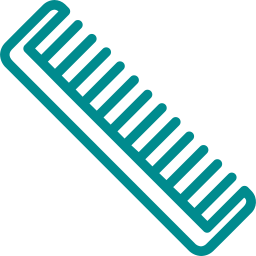
Grooming
Extremely prone to shedding despite their short coat, so weekly brushing or combing will help keep loose hairs at bay. It is also important to keep their nails properly trimmed
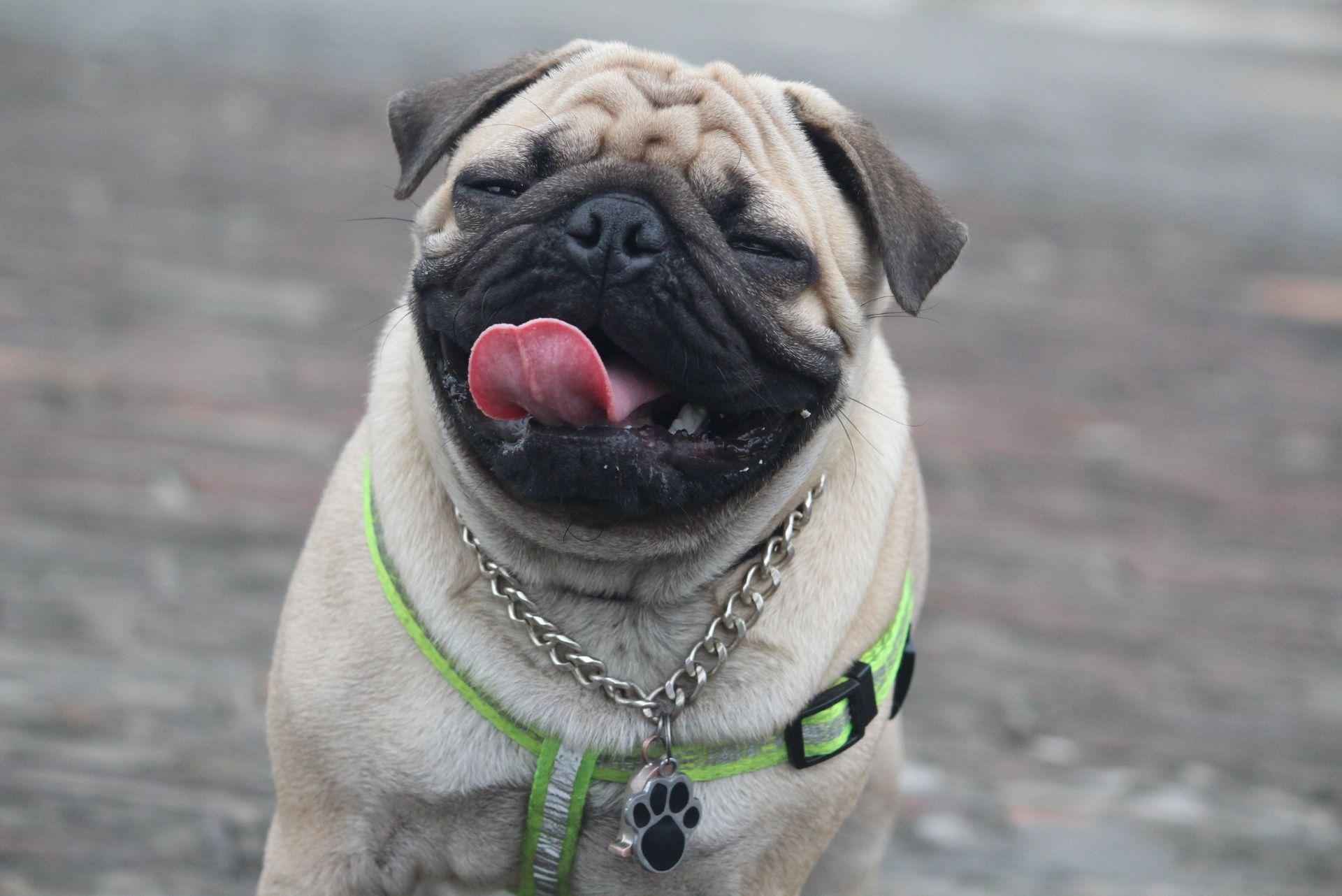
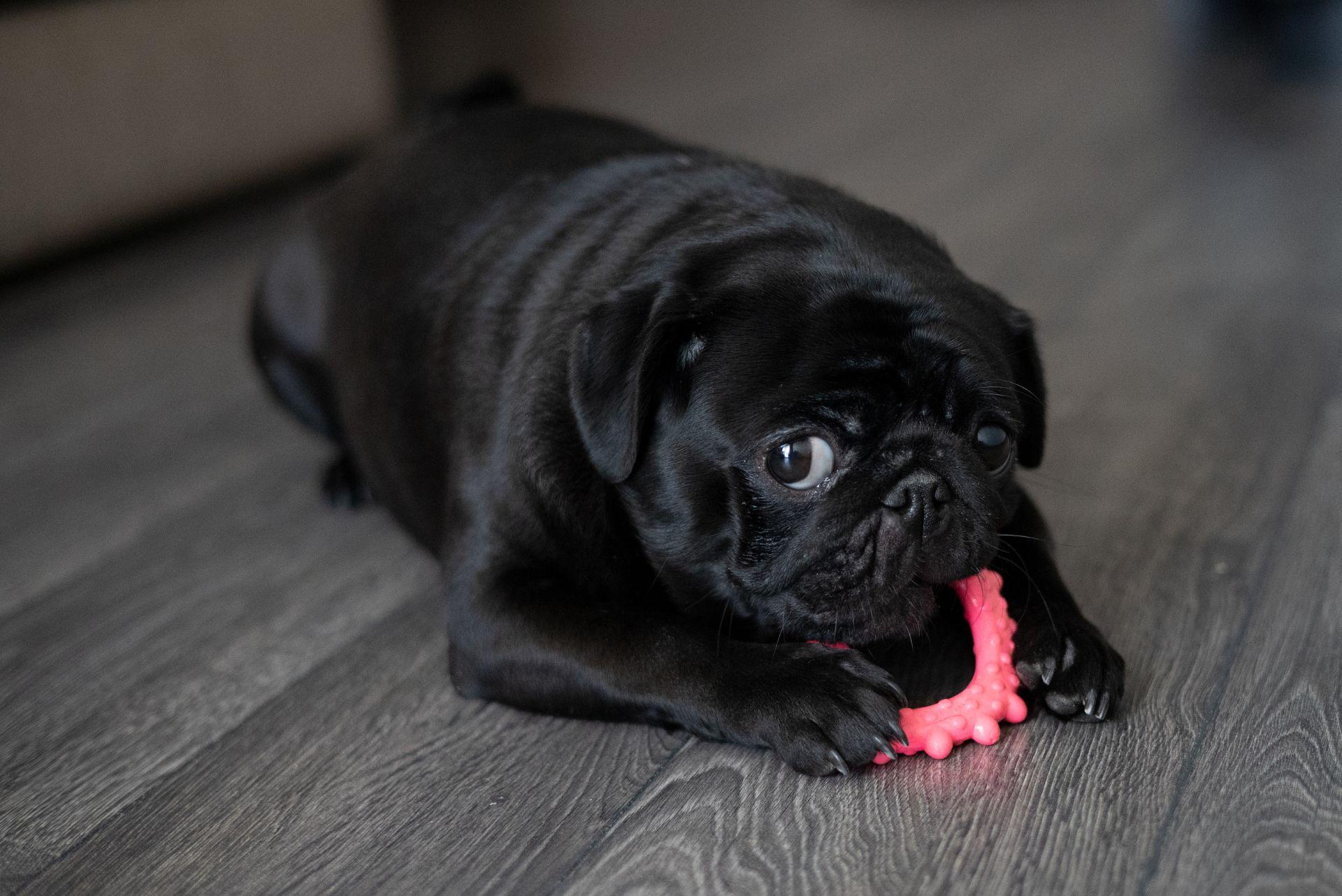

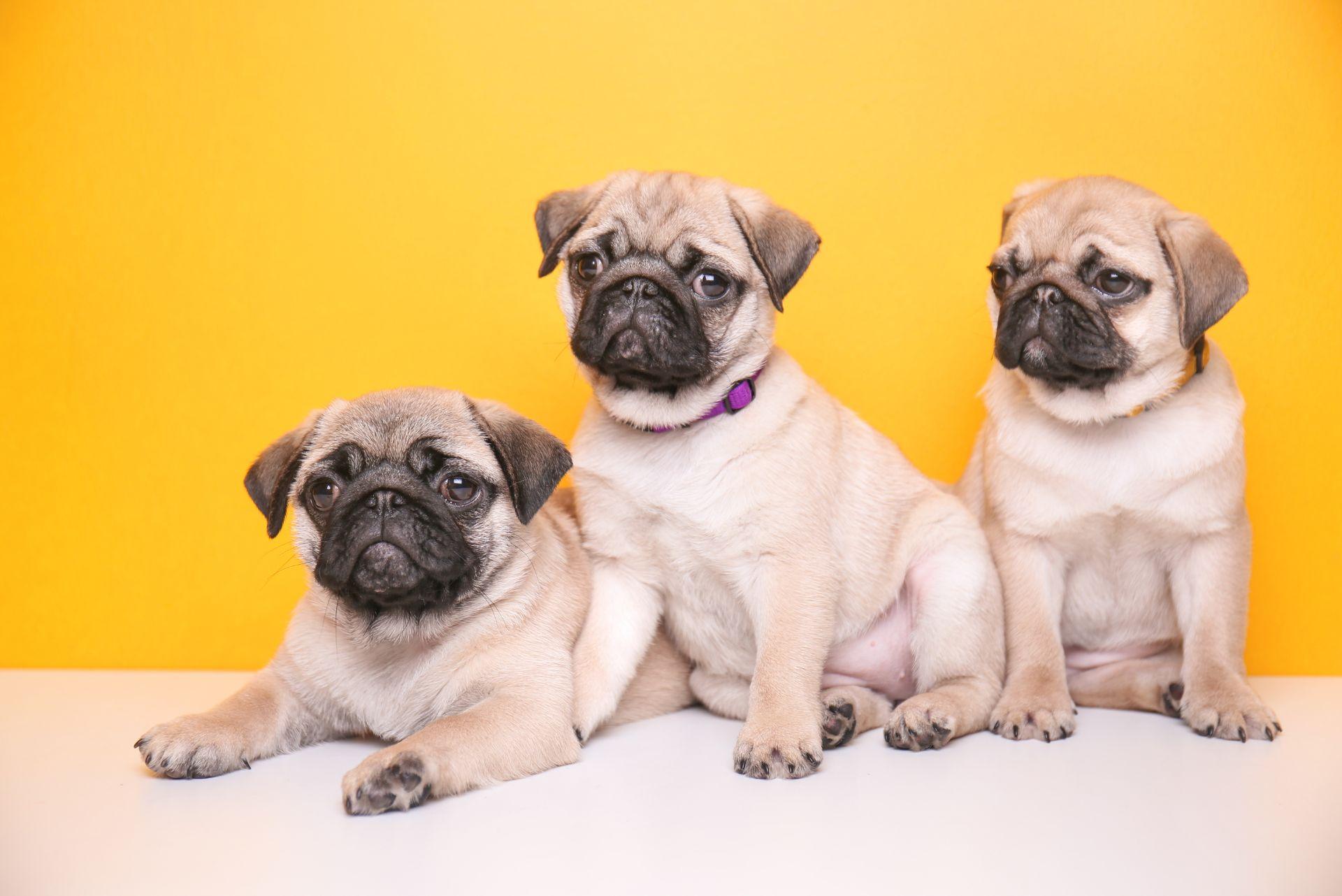
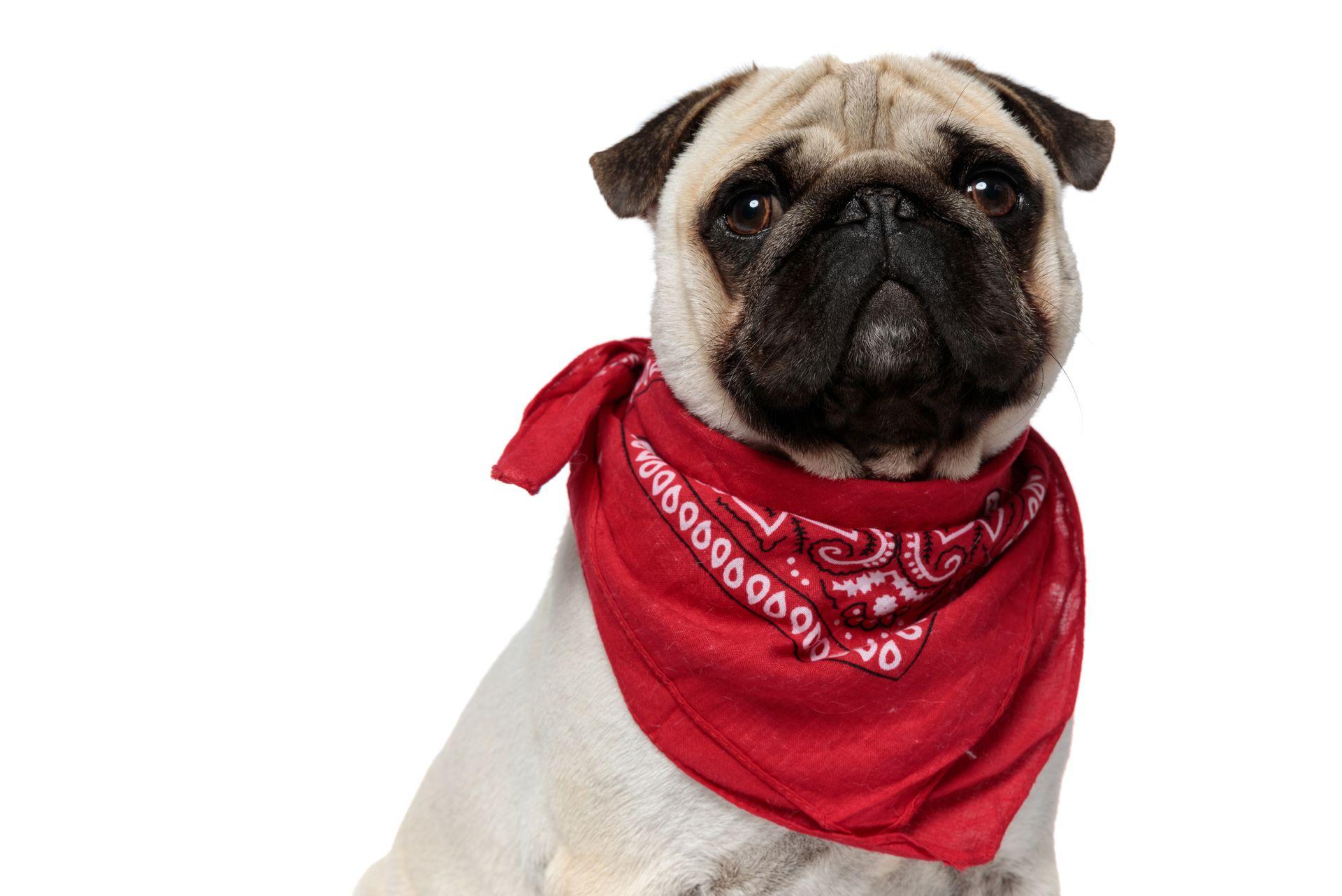
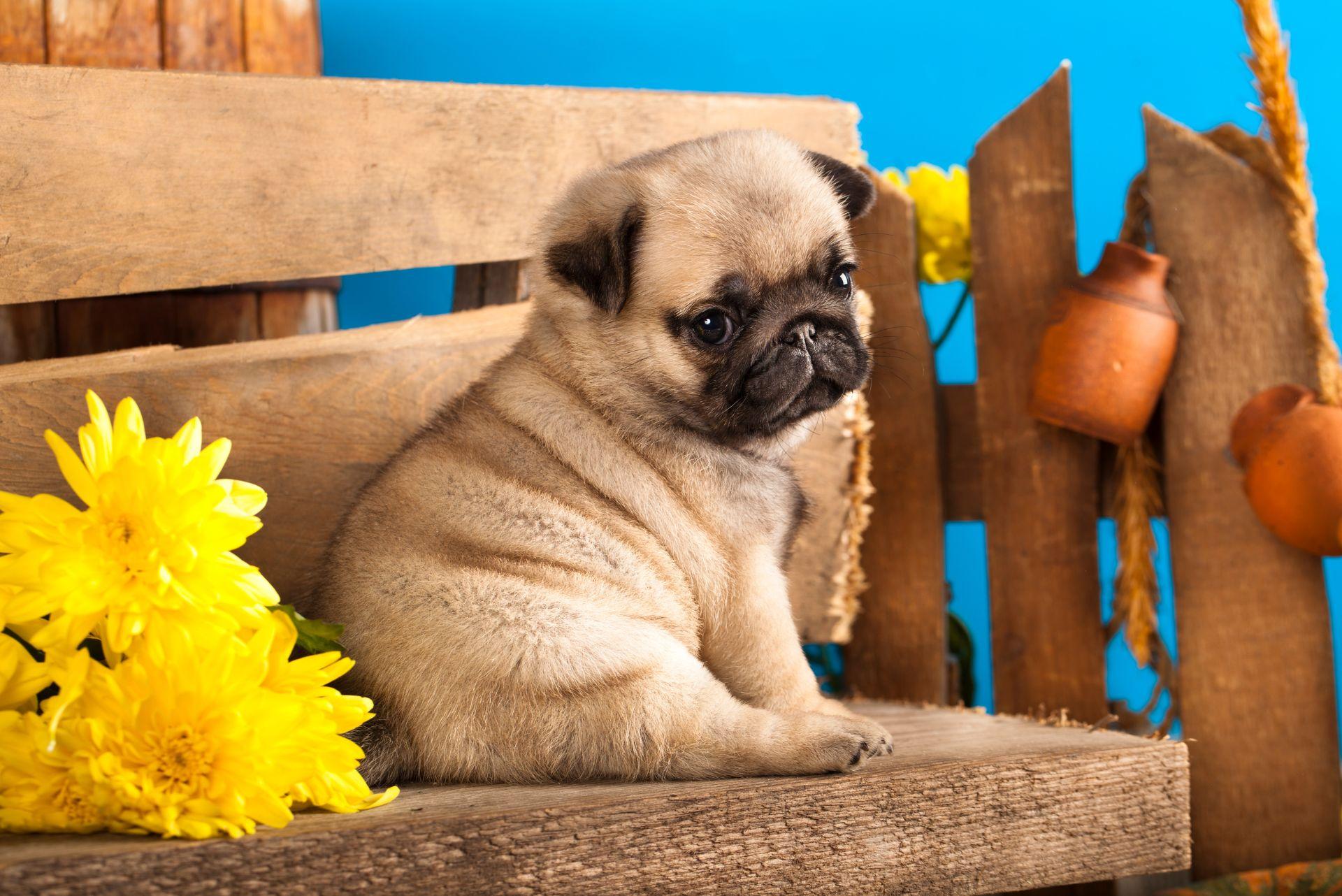
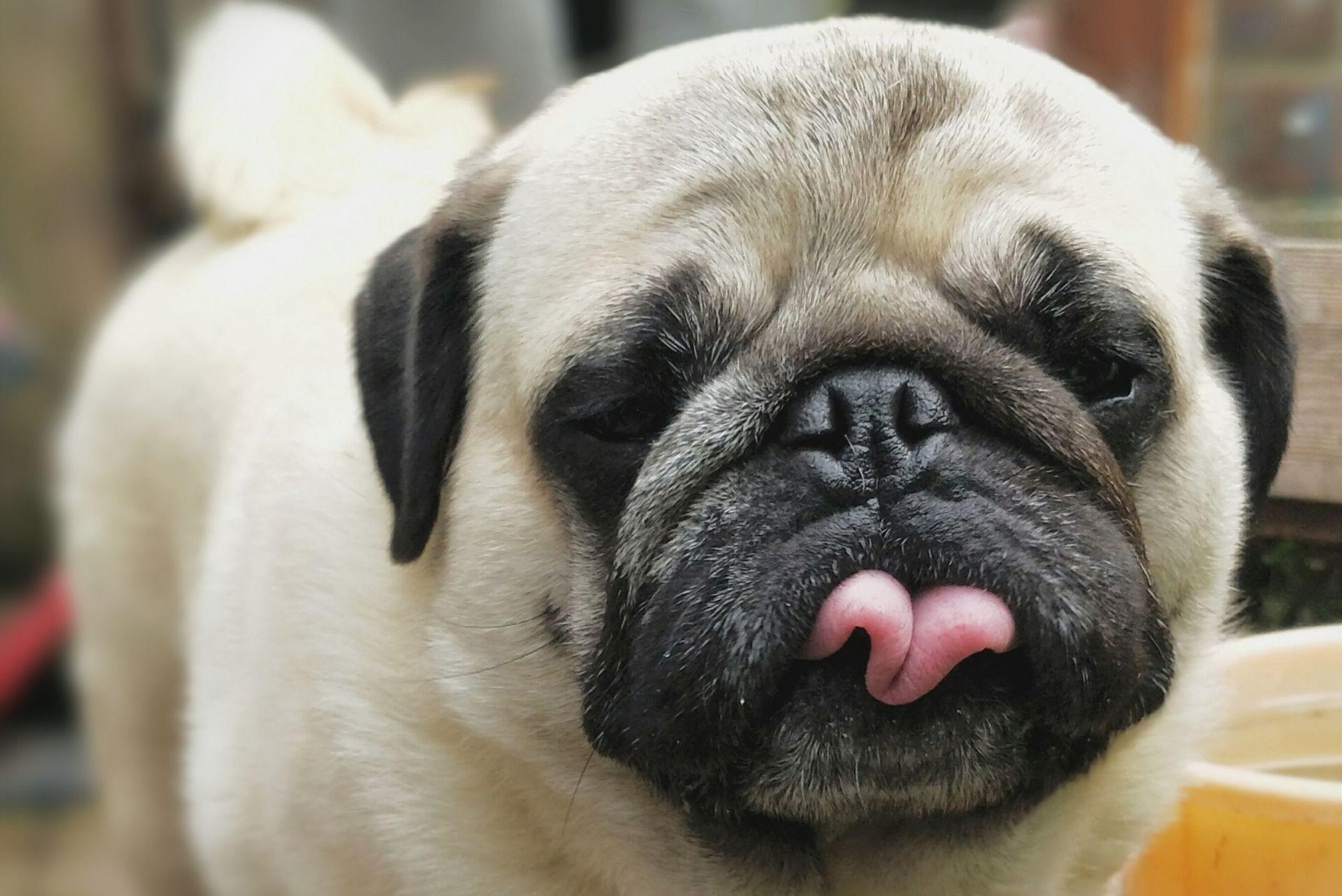
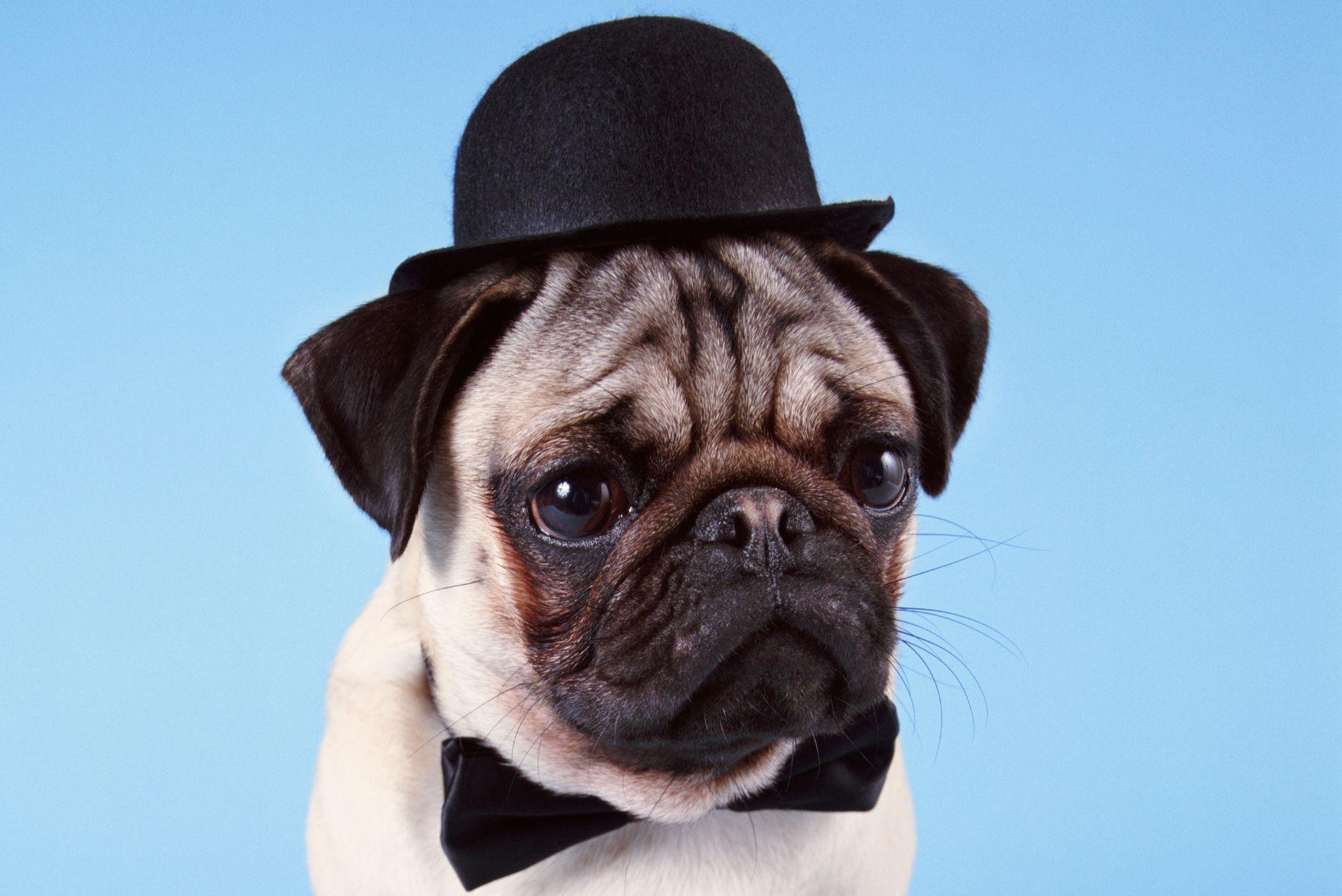
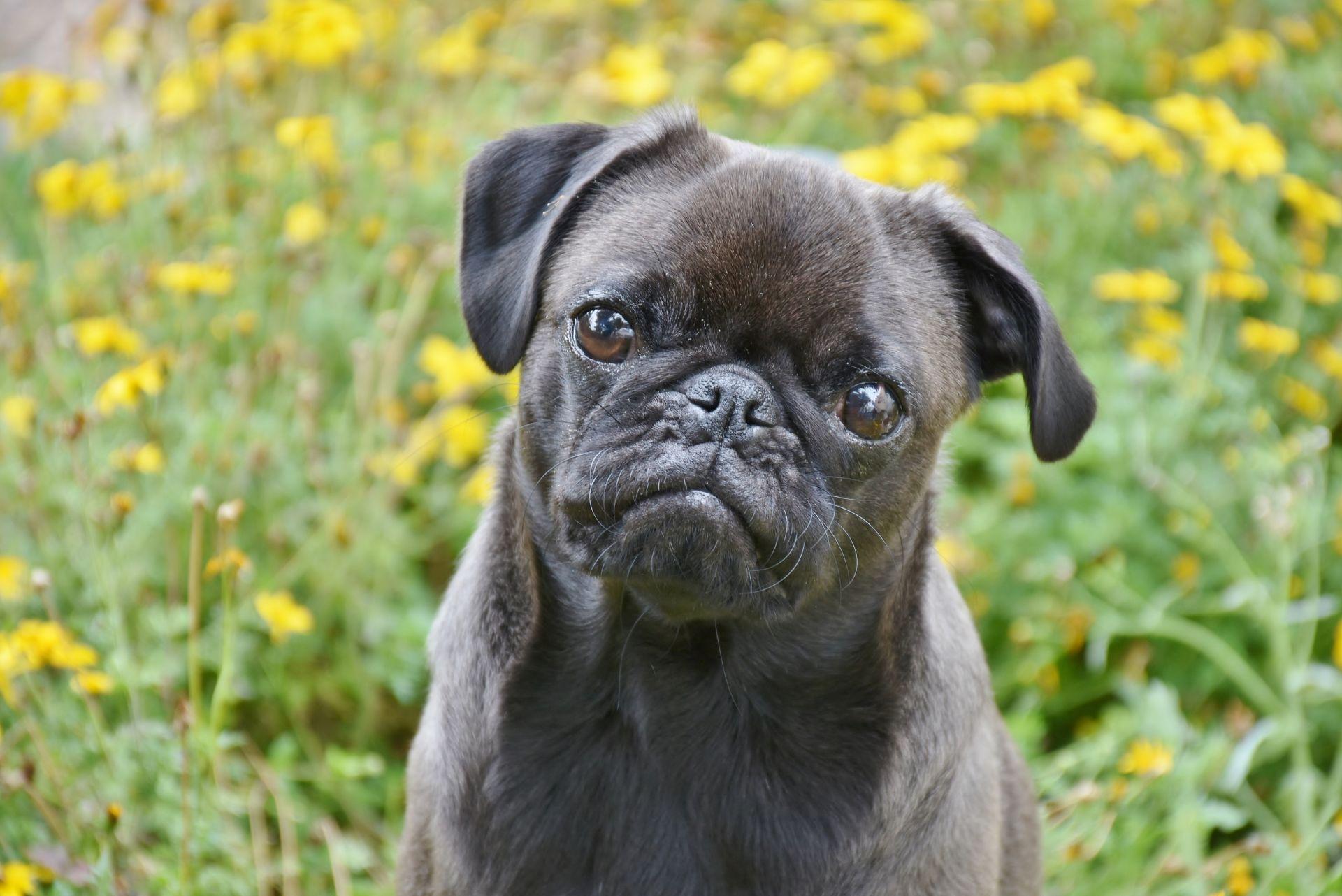

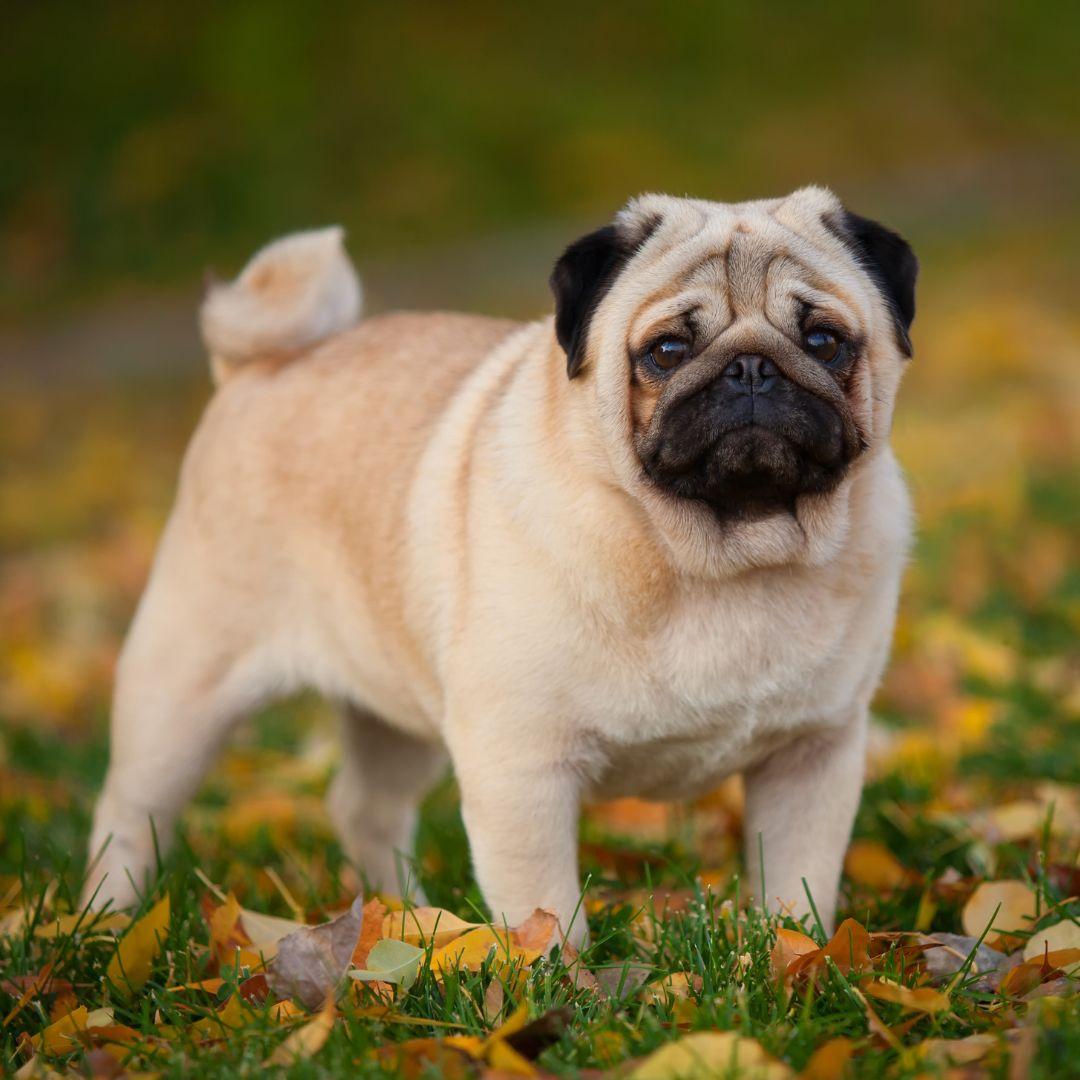
‘Multum in parvo’, the latin motto of the breed, translates as ‘a lot in a little’...and this certainly suits this little dog with a spunky personality! Pugs are excellent family dogs as they get on very well with children and other household pets, and they are known for their adaptability and easy going nature.
Pugs adore their pack; they love spending time with their humans, whether playing, learning new tricks or just cuddling up and dozing on the couch. They do not tend to be big barkers, making them a great neighbor-friendly option, and their quirky looks and funny personality will provide endless entertainment for the whole family. In terms of exercise, since they are a short-nosed breed they suffer more in hot weather, and so keeping them cool and avoiding overexertion in the heat is super important.
Overall, the breed has had quite the array of adventures over the years! Not only are they one of the oldest dog breeds, they are also one of the most popular throughout key moments in history.
They have been kept as pets by Buddhist monasteries in Tibet, carried messages to Napoleon from his wife, and even saved the life of William, Prince of Orange, and was subsequently named official dog of the House of Orange in Holland.
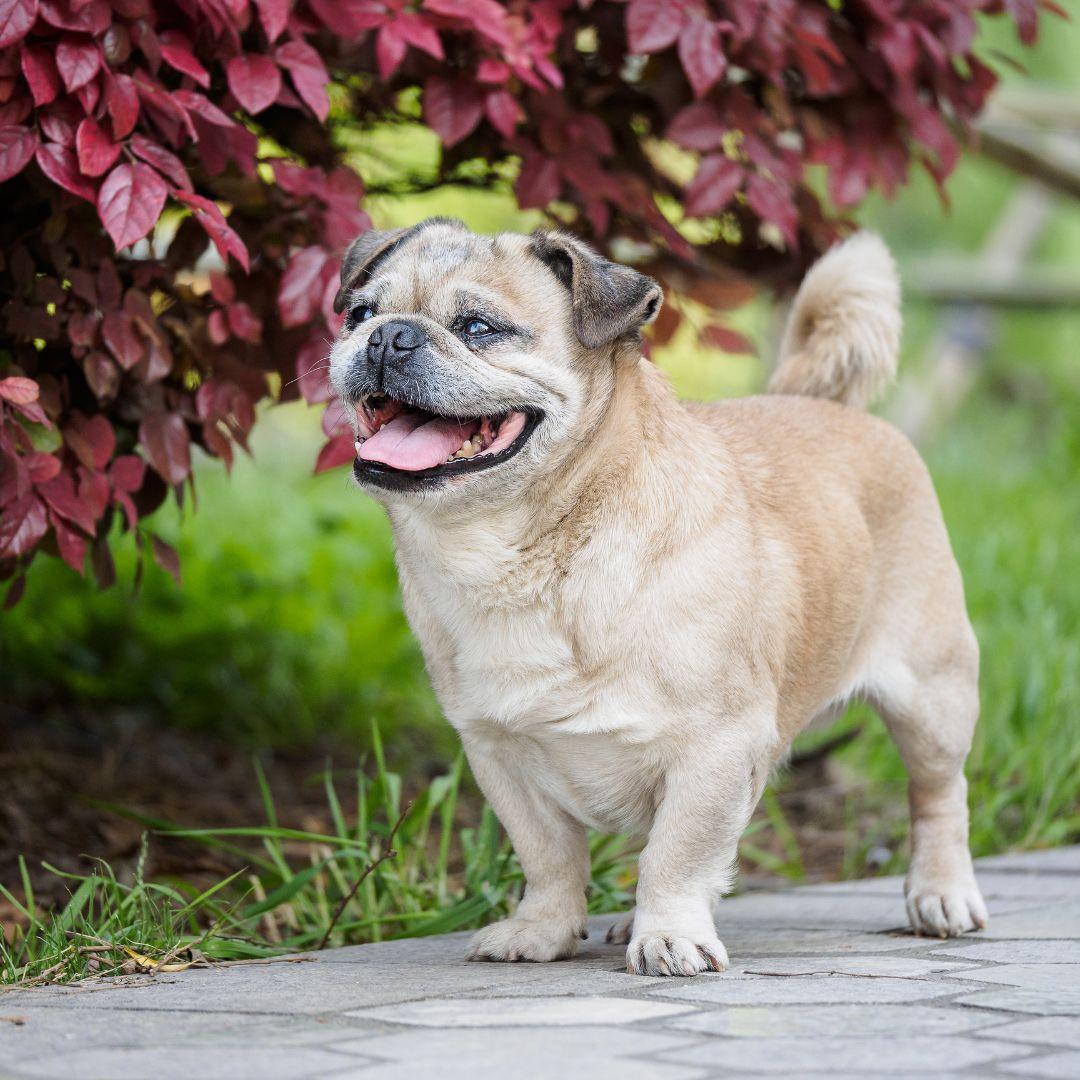
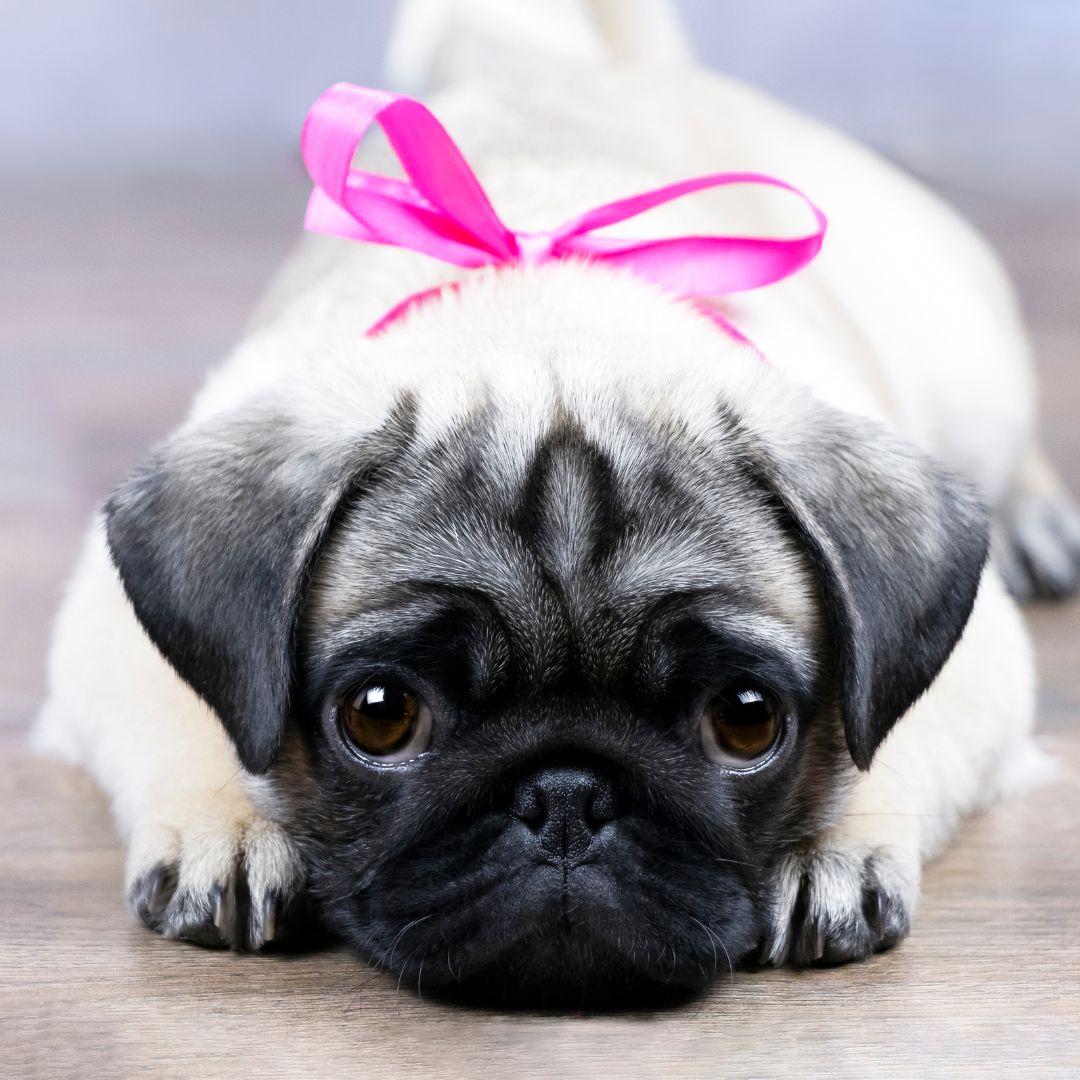
But let’s rewind for a moment…Pugs were kept and treasured by the Emperors of Ancient China, dating back 2000 years. The dogs were reserved only for royalty, and could only otherwise be acquired as a gift.
The breed later found their way to Europe, brought over by Dutch traders, and even becoming a firm favorite of Dutch royalty, with legend having it that a Pug barked to warn William of Orange of an imminent Spanish troop invasion, thus saving his life.
The adventures of the breed continued when William and Mary of Orange brought their Pugs over to England - and the rest is history! Everyone fell in love with these curly-tailed cutie pies, and the Pug craze is still evident to this day.
Short and sturdy with curly pig-like tails and a flat face, Pugs fall under the Toy breed category. Their smooth coats vary from an apricot-fawn to all black, often boasting darker tones on their face, giving them that classic look we all associate with Pug dogs.
Pugs are a Brachycephalic (flat-faced) breed, giving them the look of an adorable Dr Seuss-like creature. Their nose is upturned and surrounded by cute wrinkles and crinkles, making them seem as if they are smiling.
They have big, bright, twinkly eyes that they aren’t afraid to use to get what they want, and their small folded down ears will raise up and down at the mention of treats!
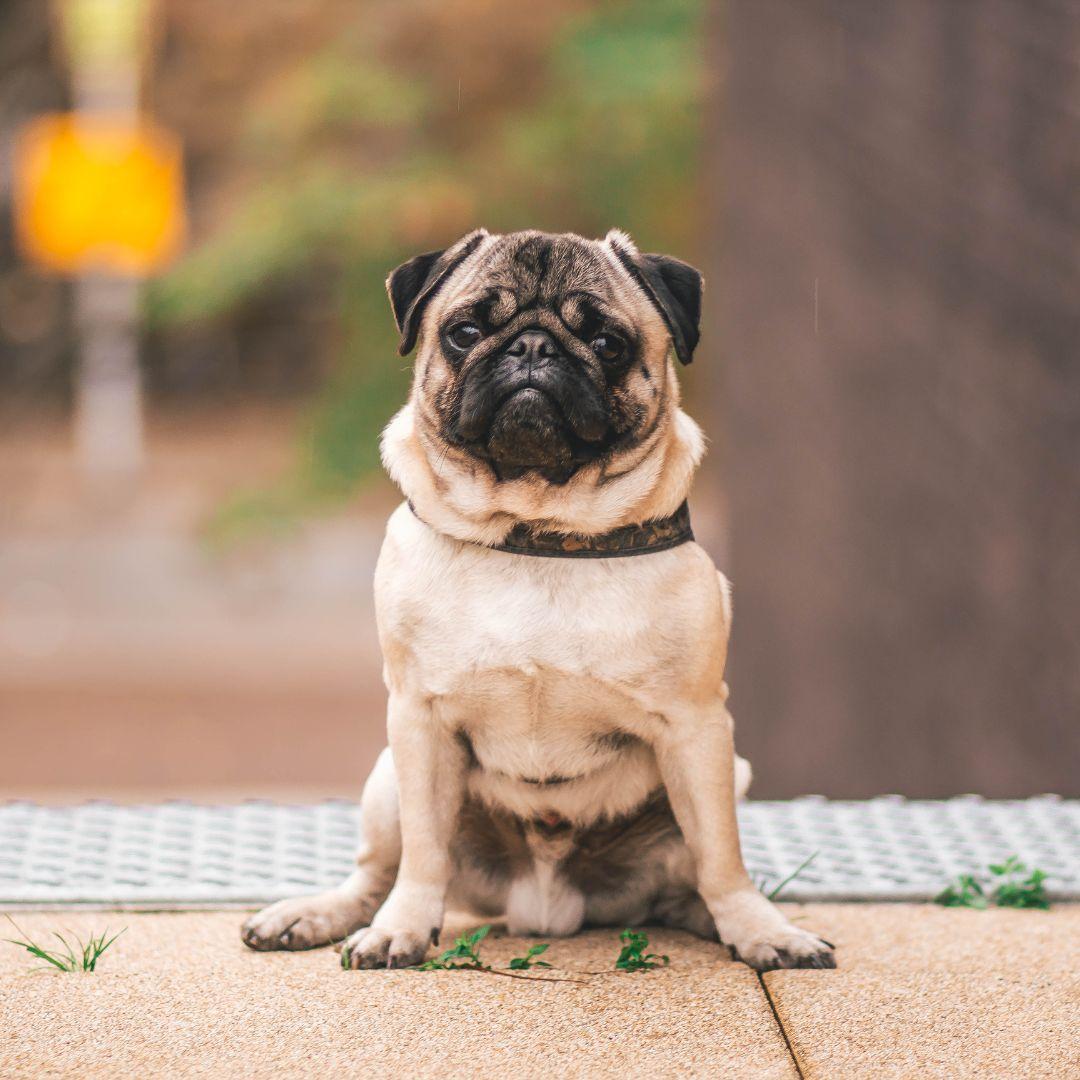
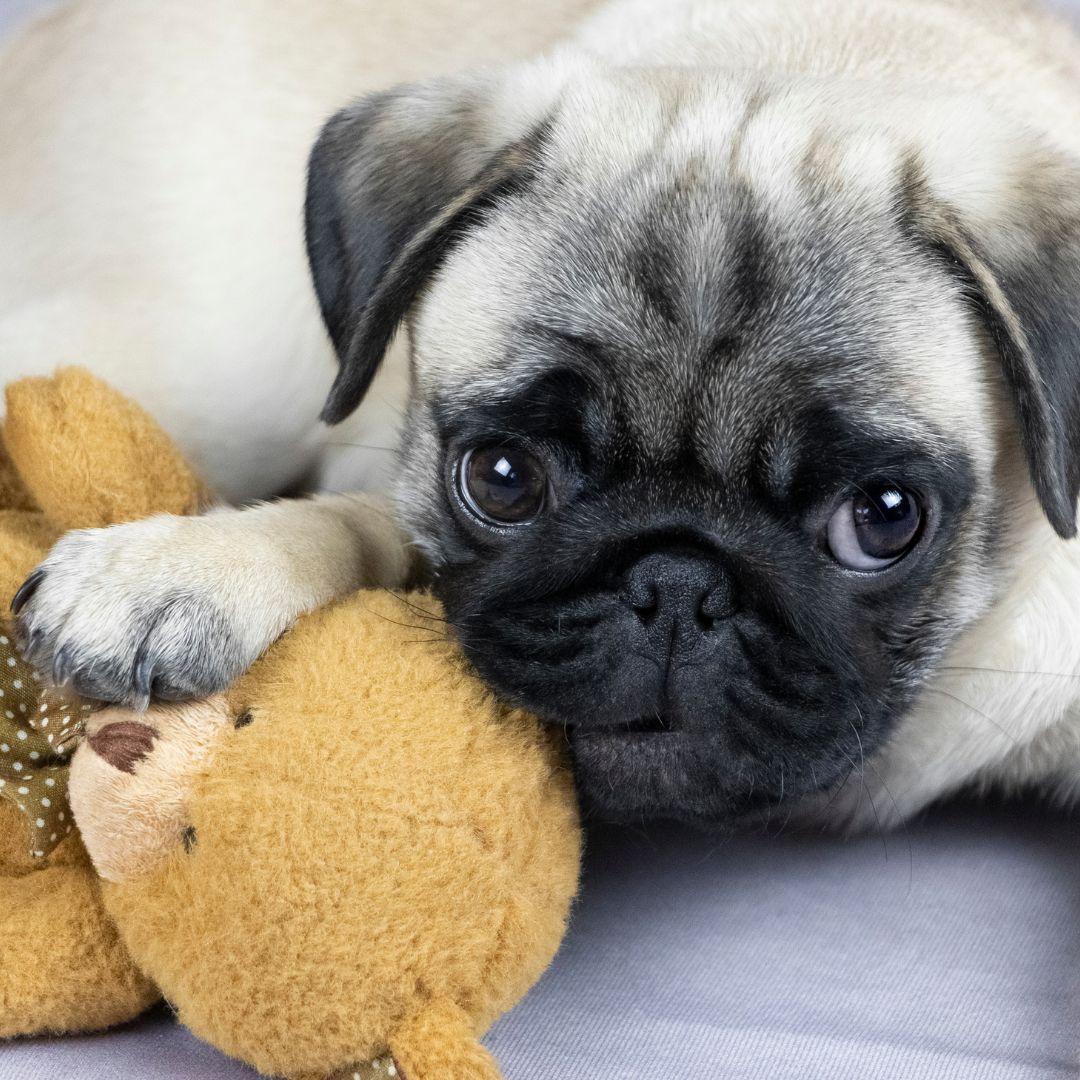
Pug dogs are extremely friendly and loyal to those they love. They are happiest when hanging out with their humans, playing or cuddling, and are a firm favorite amongst families with children, where Pugs make both excellent playmates and protectors.
They have an overall sweet temperament with an upbeat personality, dry sense of humor and mischievous sparkle which is bound to keep their humans entertained for hours on end. Pugs love playtime, whether with people or other animals, and are known for their extreme friendliness and adaptability.
Pugs are generally pretty smart, and while they don’t need as much exercise as other breeds, they thrive through stimulative play and learning new tricks.
The breed do tend to be prone to obesity, and so regular walks and exercise - about an hour a day does the trick - are particularly vital to keep them healthy…even though they are more likely to want to snooze the day away on your lap!
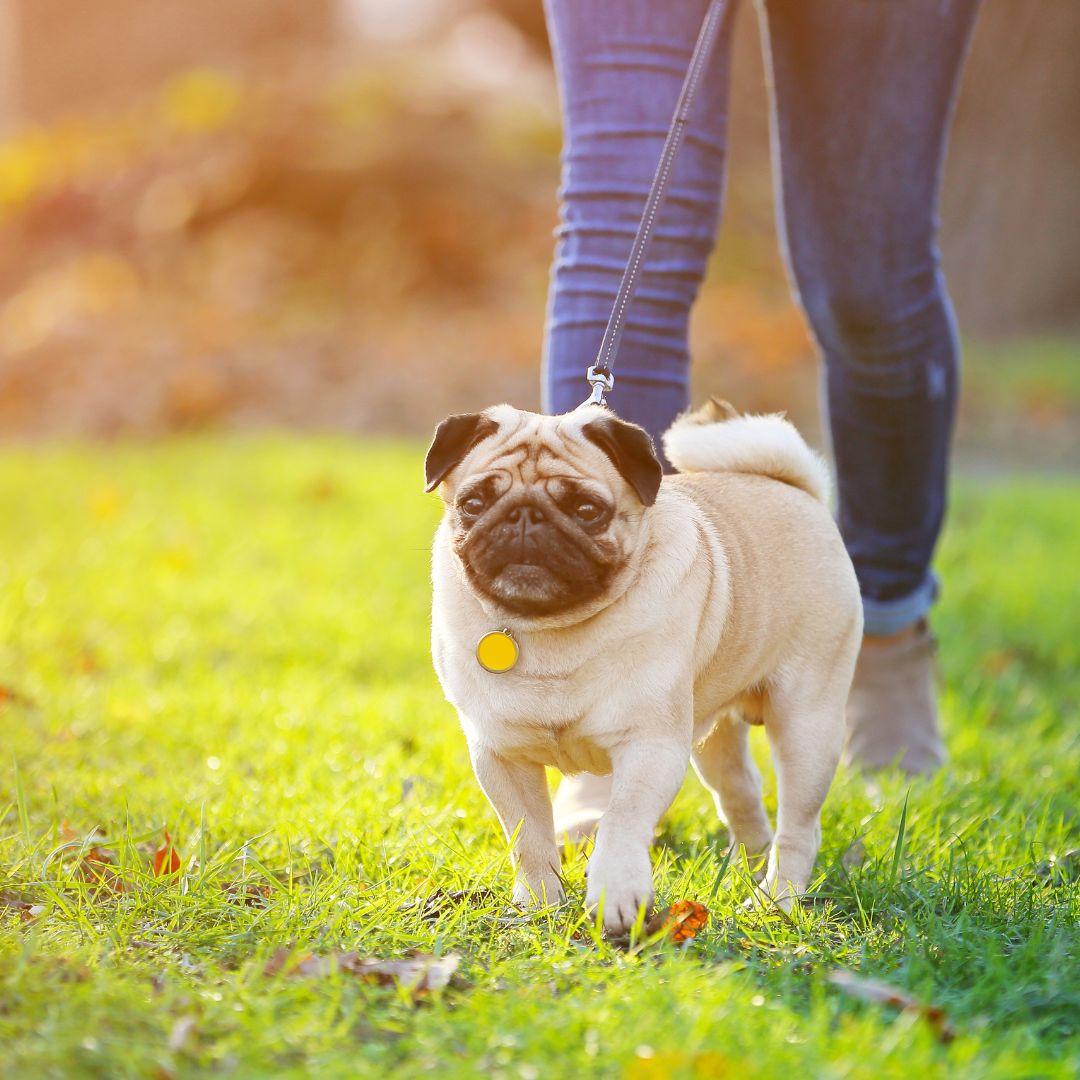
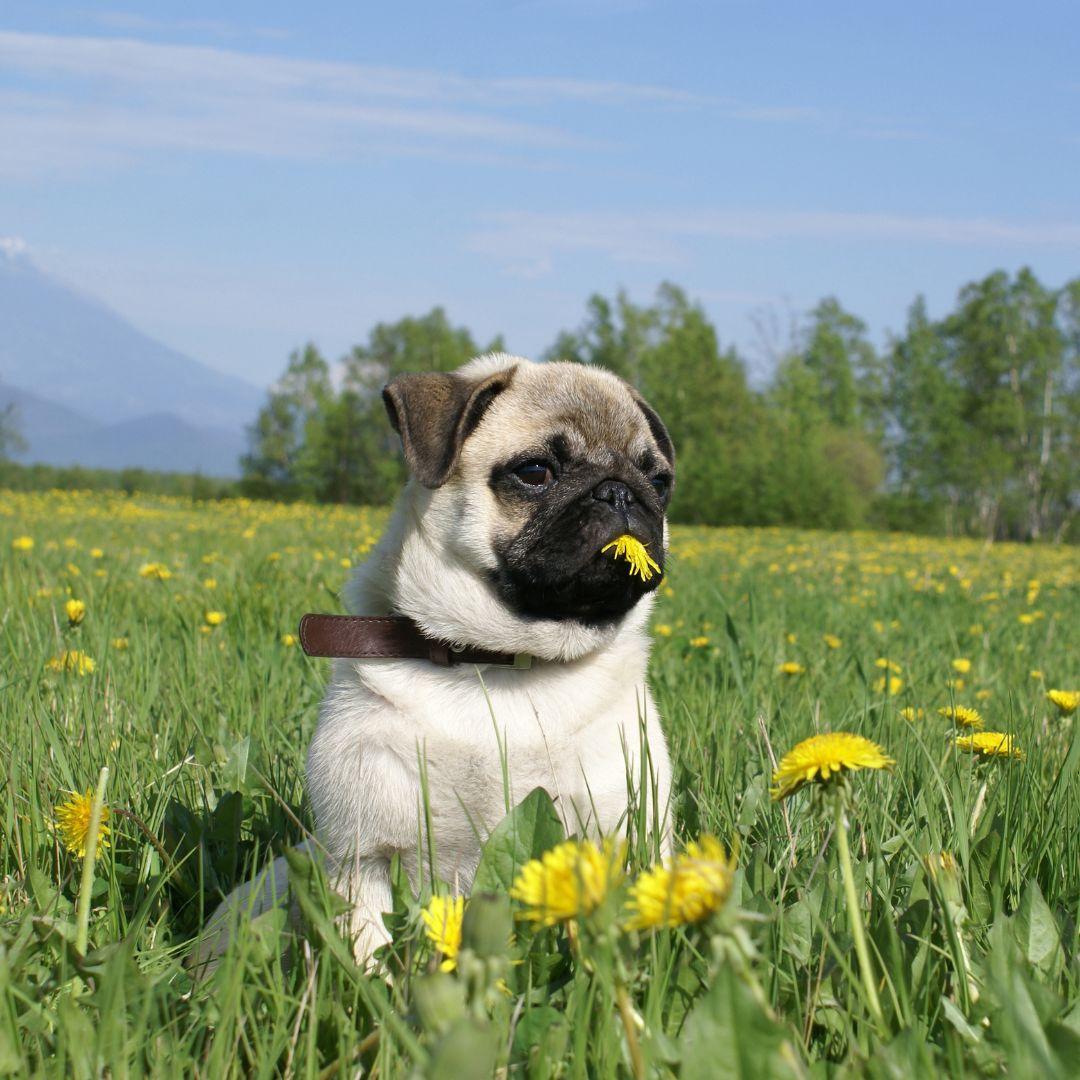
As they are a flat-faced breed, their short muzzle means that panting isn’t as effective at cooling them down as it would be in longer-snouted breeds. This is really important to remember when it comes to exercising your Pug; heat stroke and heat exhaustion can occur much more easily if your Pug is overexerted or if they are taken out in warmer temperatures.
While Pugs are naturally friendly in demeanor, it is recommended that this be solidified through proper socialization and training to keep them as calm and well-mannered as possible. Getting them used to other people and animals from a young age will be beneficial to the overall ease and peace of family life, and you can be sure that you have done all you can to raise a perfectly jolly and happy Pug dog.
Even though Pugs have a short coat, they shed something fierce! It is important to keep these stray hairs at bay with regular brushing or combing, keeping both your dog and your furniture looking smart and fluff-free.
Brushing can also help distribute their skin oils throughout their coat for general health and shine, and bathing should occur monthly or more often if needed.
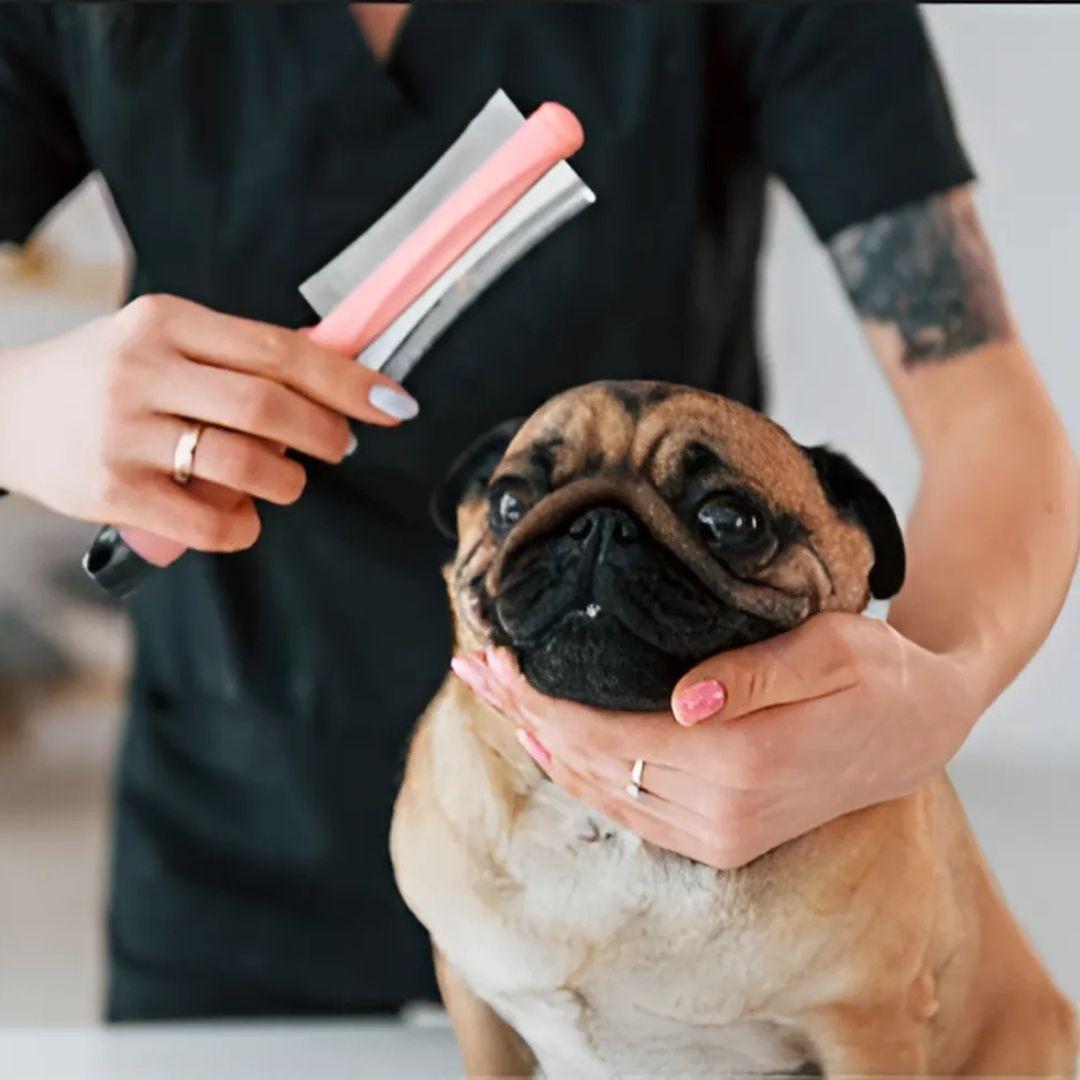
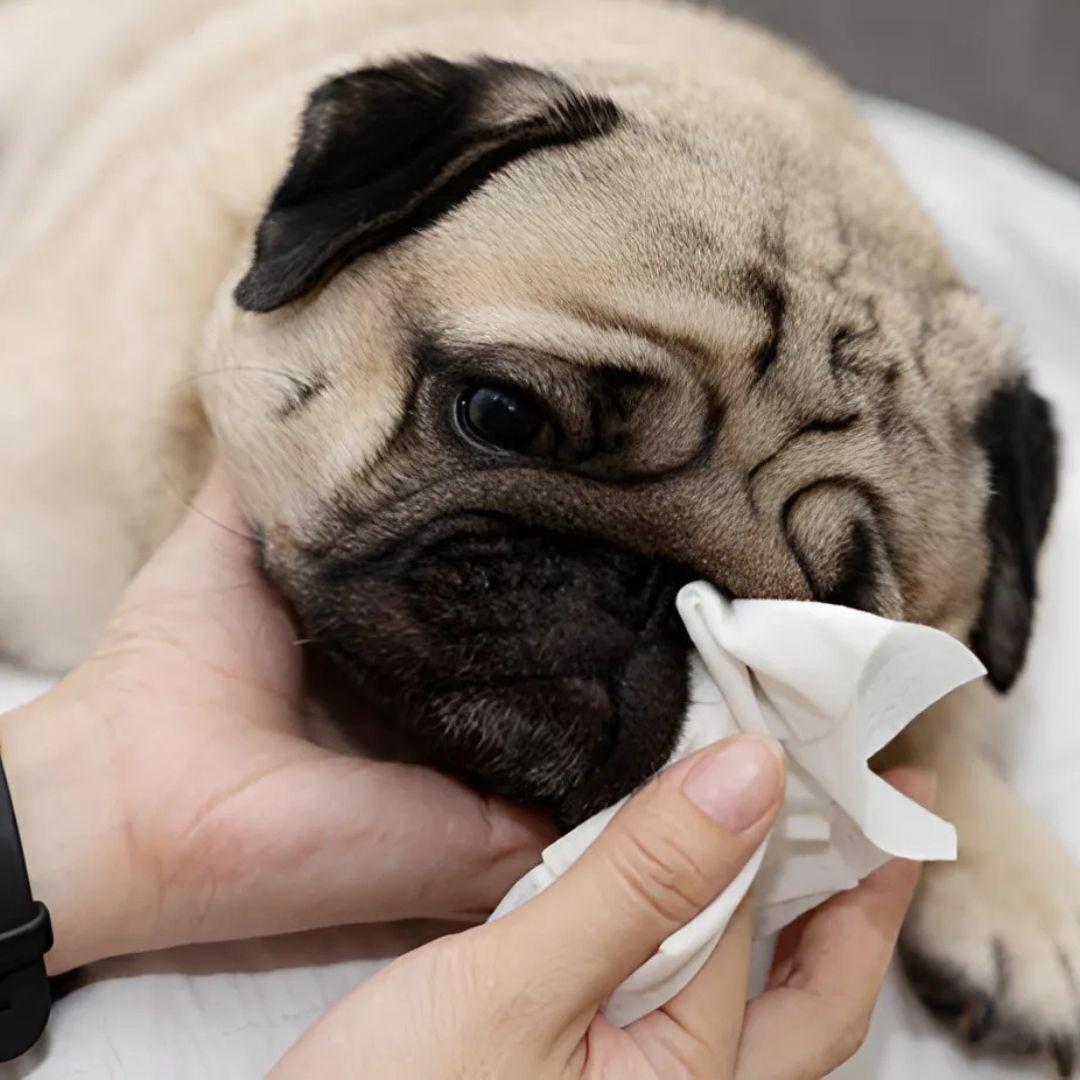
Now, you are going to need to get up close and personal with your dog’s face folds! Pugs tend to have more excess skin than other breeds, which is particularly evident in their distinctive face wrinkles. It is recommended to use a damp cloth and gently manually clean any dirt or debris out from between the skin folds. This should be done every week to help reduce the risk of facial infections caused by a build-up of bacteria on the skin.
While teeth can sometimes be something that owners neglect in their pets, a Pug’s teeth should be cleaned every day if possible. When it comes to their nails, it is a good indicator that they need a trim when you start to hear their nails clicking against the floor when they walk. Nails should be trimmed monthly but can be done more often if needed.
The Pug dog breed unfortunately does have a genetic disposition towards obesity and weight-related issues, and so exercise and diet management is vital to maintain a happy and healthy pup.
Like any dog, each Pug will be unique and may have certain dietary requirements or deficiencies which need to be met - always consult your vet if you are at all concerned. They are big food fans, and so excessive scraps and treats should be avoided to minimize the risk of weight gain. It is recommended that they be fed two balanced meals a day of good quality dog food or whatever diet has been recommended by a veterinary professional.
As always, remember to keep your dogs hydrated with a constant supply of clean, fresh water, especially when the weather gets warmer.
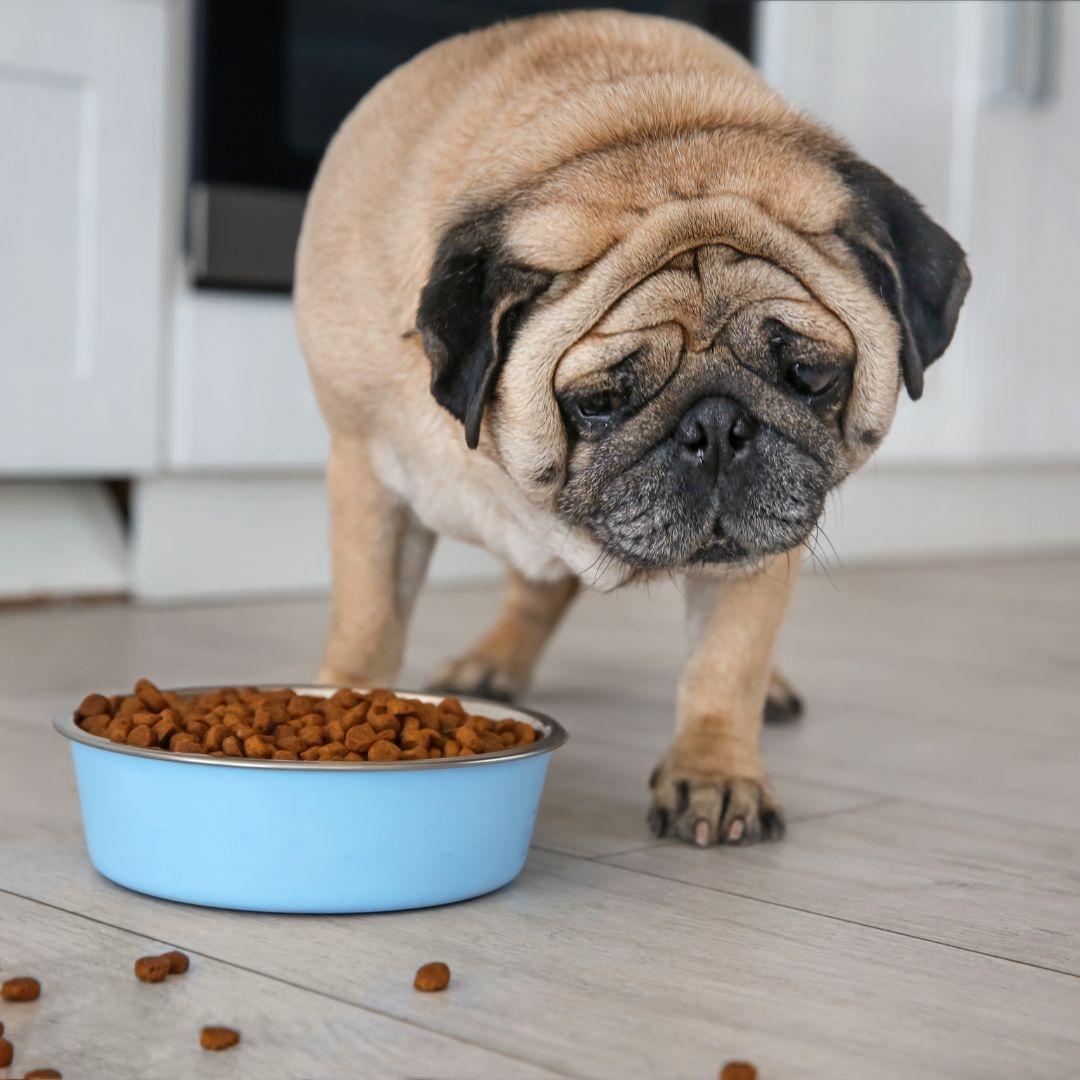
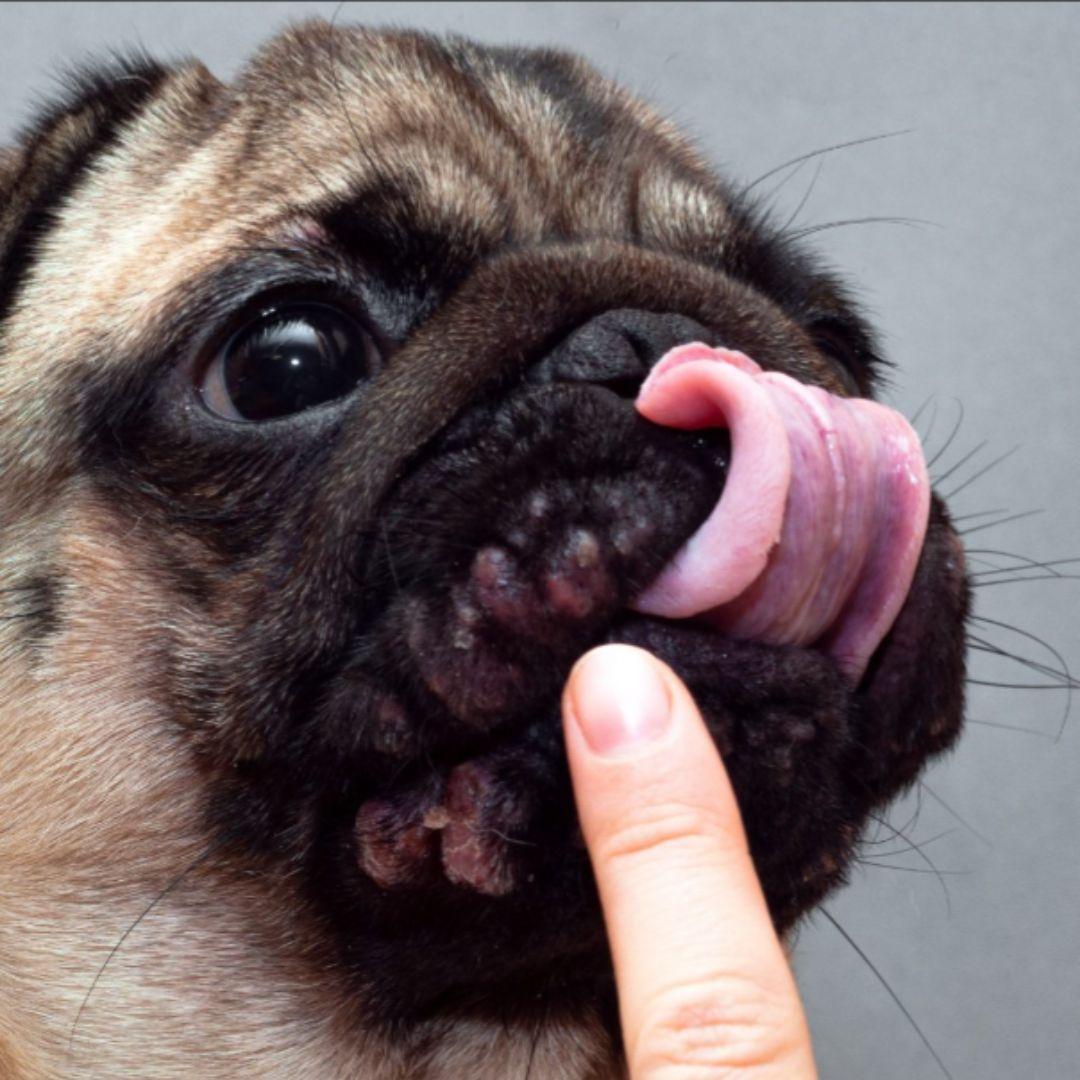
Here are some of the most common health issues that affect the Pug dog breed, and what signs and symptoms to keep an eye out for:
Due to their facial skin folds and narrow ear canals, it is often found that Pug dogs are more prone to allergies and skin infections than other breeds. Dirt and bacteria are more likely to build up in their skin folds and smaller ears, and if not regularly cleaned can lead to uncomfortable skin issues for your pup.
Maintaining good hygiene is paramount for your Pug and will help minimize the risks of them developing infections, and while allergies cannot be cured, they can be easily identified and managed with the help of a veterinary professional, who may prescribe certain skin products or medications.
Pugs have large protruding eyes, which despite being super adorable can actually cause a lot of issues for our four-legged friends. Pugs have shallow eye sockets and eyelids that do not completely close, meaning that this natural level of protection isn’t as effective as it is in other breeds, so their eyes are at greater risk of being punctured, scratched or, in severe cases, popped out of their sockets.
Not only this, it is a lot easier for dust and dirt to get into their eyes and not be wiped away effectively, causing irritation or even infection if not cleaned regularly.
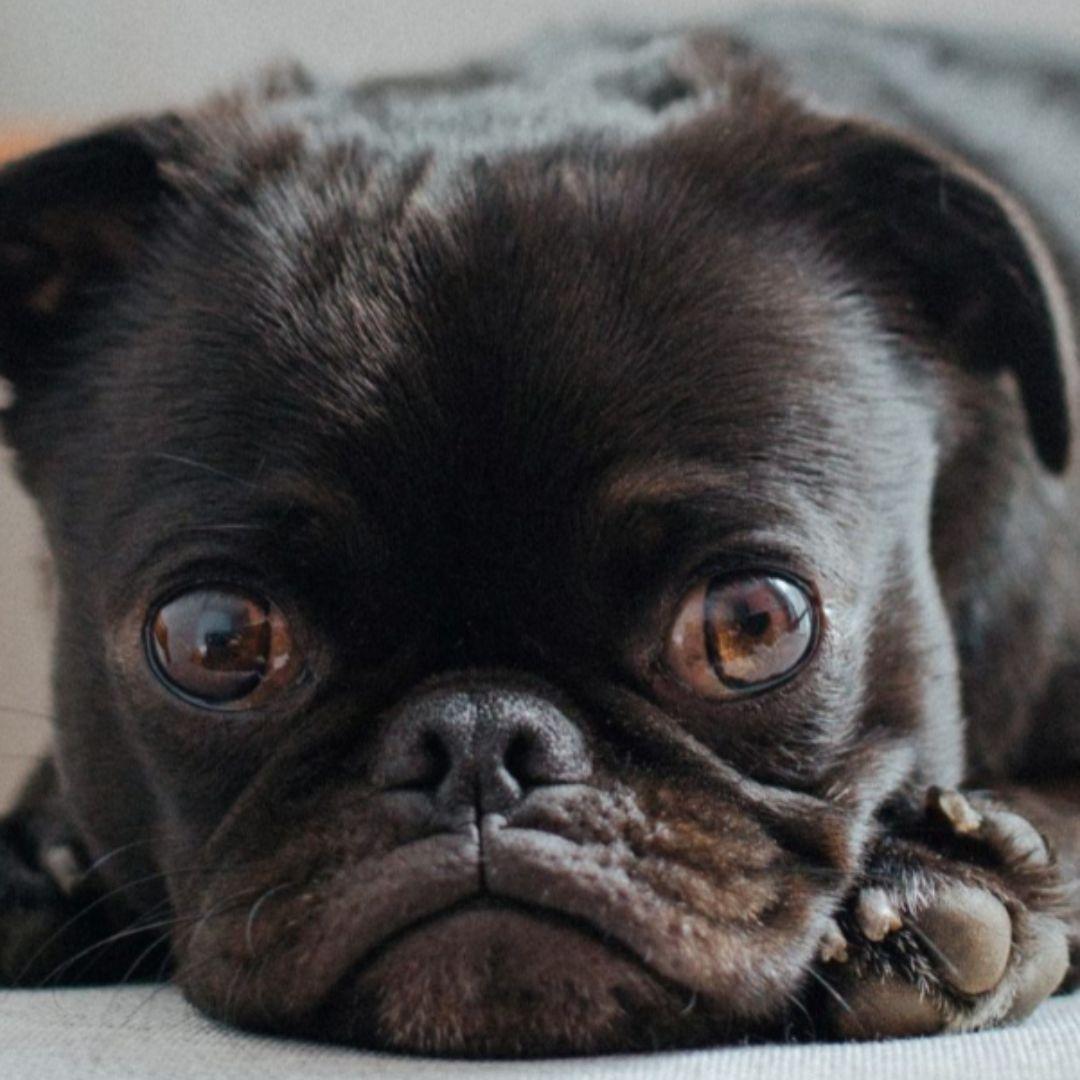

Even though pugs have the same amount of teeth as other dog breeds, they have a much smaller jaw, meaning that often they have too many teeth for the size of their mouth. This can cause their teeth to become overcrowded, making it easier for food and subsequent bacteria to build up and may result in tooth pain, decay and loss.
It is highly recommended that dogs who struggle with this issue have their teeth cleaned daily to help avoid an overgrowth of bacteria and hopefully reduce the risk of further dental issues. You may also want to consider getting your Pug’s teeth professionally cleaned each year to make sure their dental hygiene is in the best shape it can be.
Dogs cool themselves down by panting, however in the case of Pug dogs, their flat nose is less effective at distributing cool air, making it harder for this breed to cool themselves down naturally. This often leads to overheating, and can result in more serious issues like heat exhaustion or heat stroke.
Pugs will need extra attention when the weather gets warmer, and taking them out in severe heat should be avoided. Ensure that they always have access to a supply of clean, fresh water, and cooling baths or water-based playtime can also be a great way to keep them cool. Overexertion in general should be avoided when it comes to Pug dogs, as even if the weather is cooler too much exercise can still make it hard for them to regulate their own body temperature.
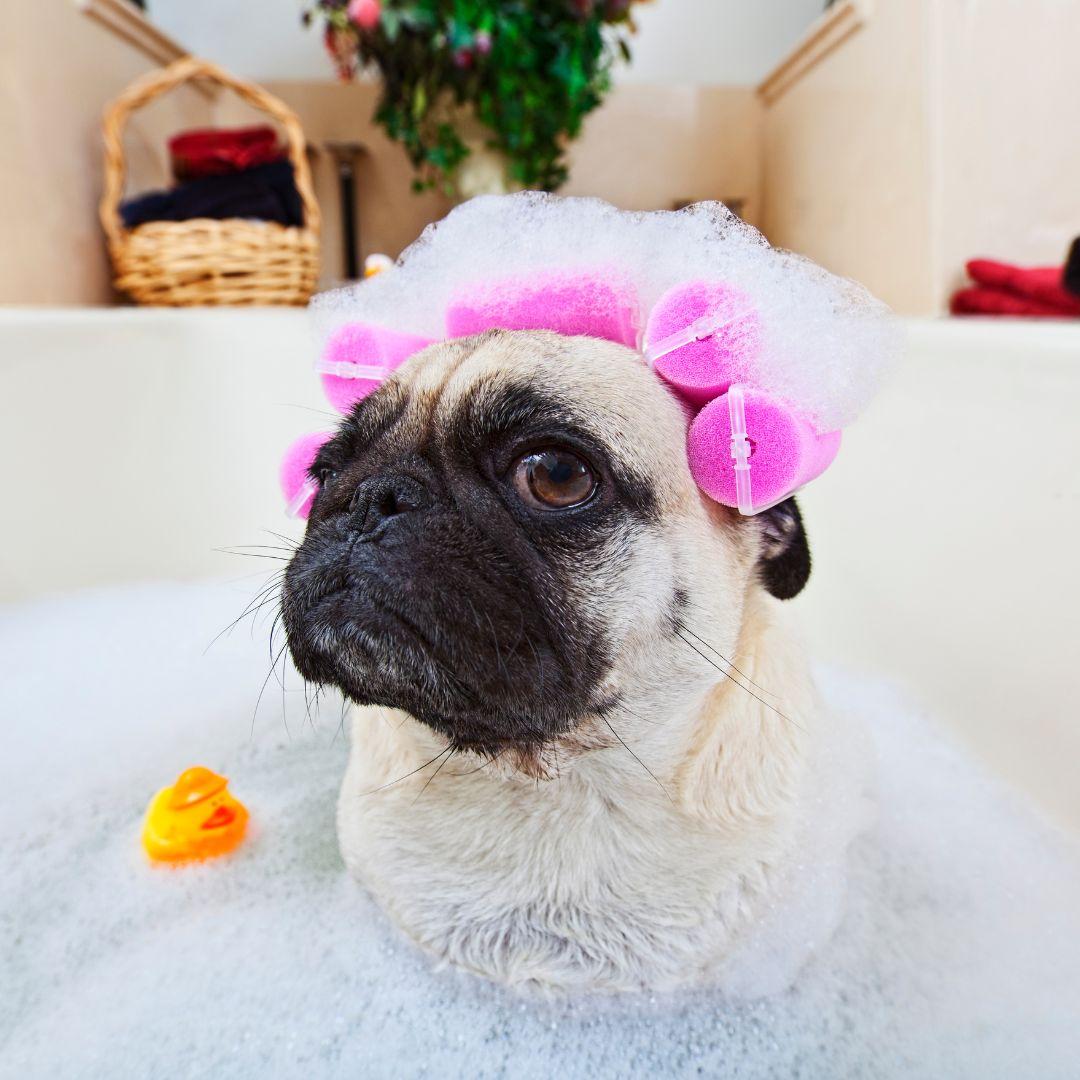
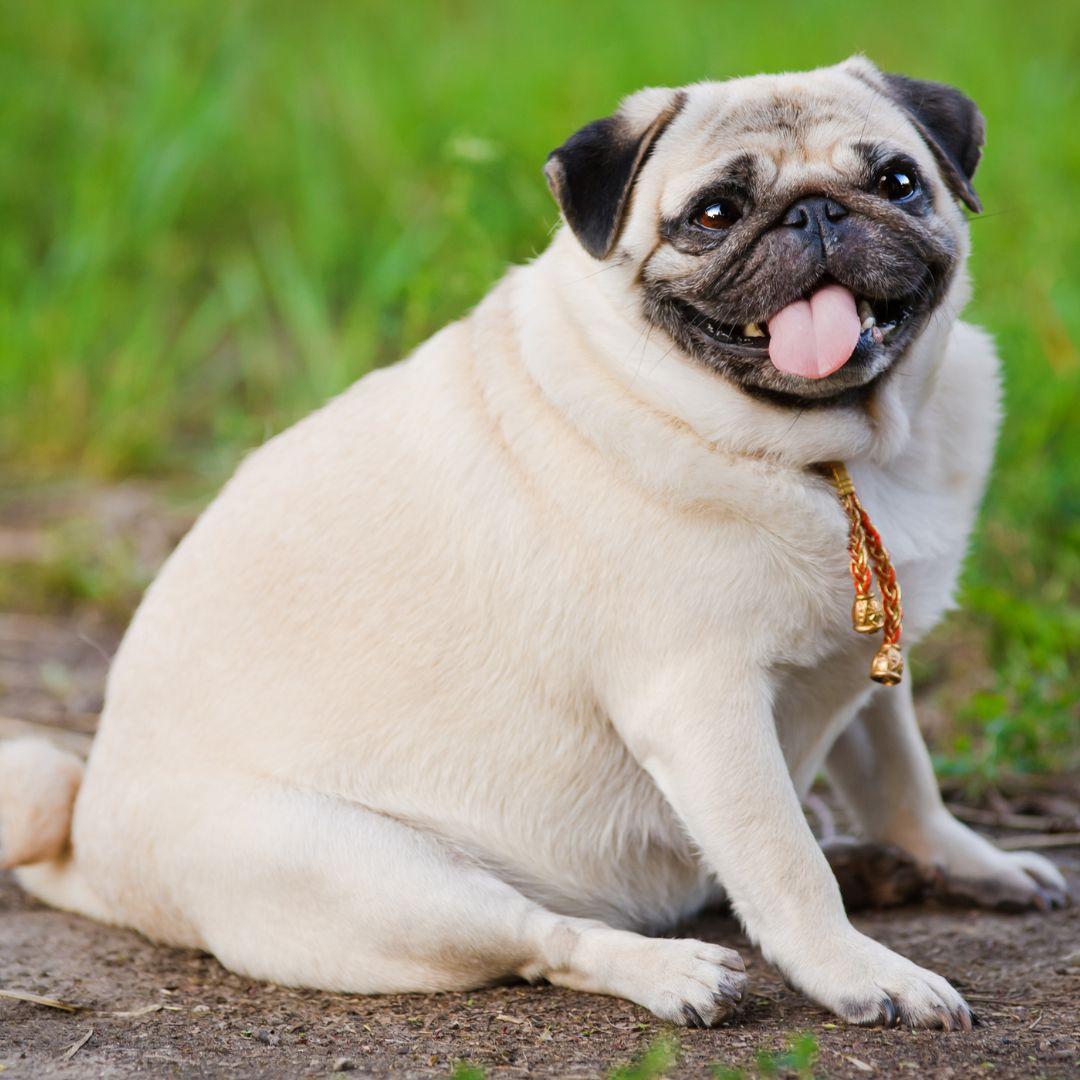
Pugs are avid food lovers, as well as being very fond of lazing around on the couch with their favorite people. This combination and their general genetics make weight gain and subsequent canine obesity much more of a risk.
Obesity comes with its own set of risks, such as joint issues, diabetes and heart disease, and specifically in Pugs it can further affect their already prevalent breathing issues. Regular playtime and exercise along with proper diet management - so less treats and table scraps, no matter how big the puppy eyes! - are part and parcel of helping to reduce your Pug’s risk of canine obesity.
Pugs are a Brachycephalic (short-nosed) breed, meaning that their airways are naturally more narrow and they are prone to more breathing difficulties than other breeds.
Their short skull, facial and nasal bones affect their ability to breathe, particularly when overexerted or as a way of cooling themselves down in warmer temperatures. You may notice that your Pug snores or generally makes loud snorts or breathing sounds, which can indicate that their breathing is suffering and may need intervention.
Always consult your vet if you are at all concerned about your Pug’s ability to breathe to determine the best course of treatment. It is sometimes recommended to have your Pug’s nostrils surgically widened when they are still a puppy, to make it easier for them to breathe as they enter adulthood.
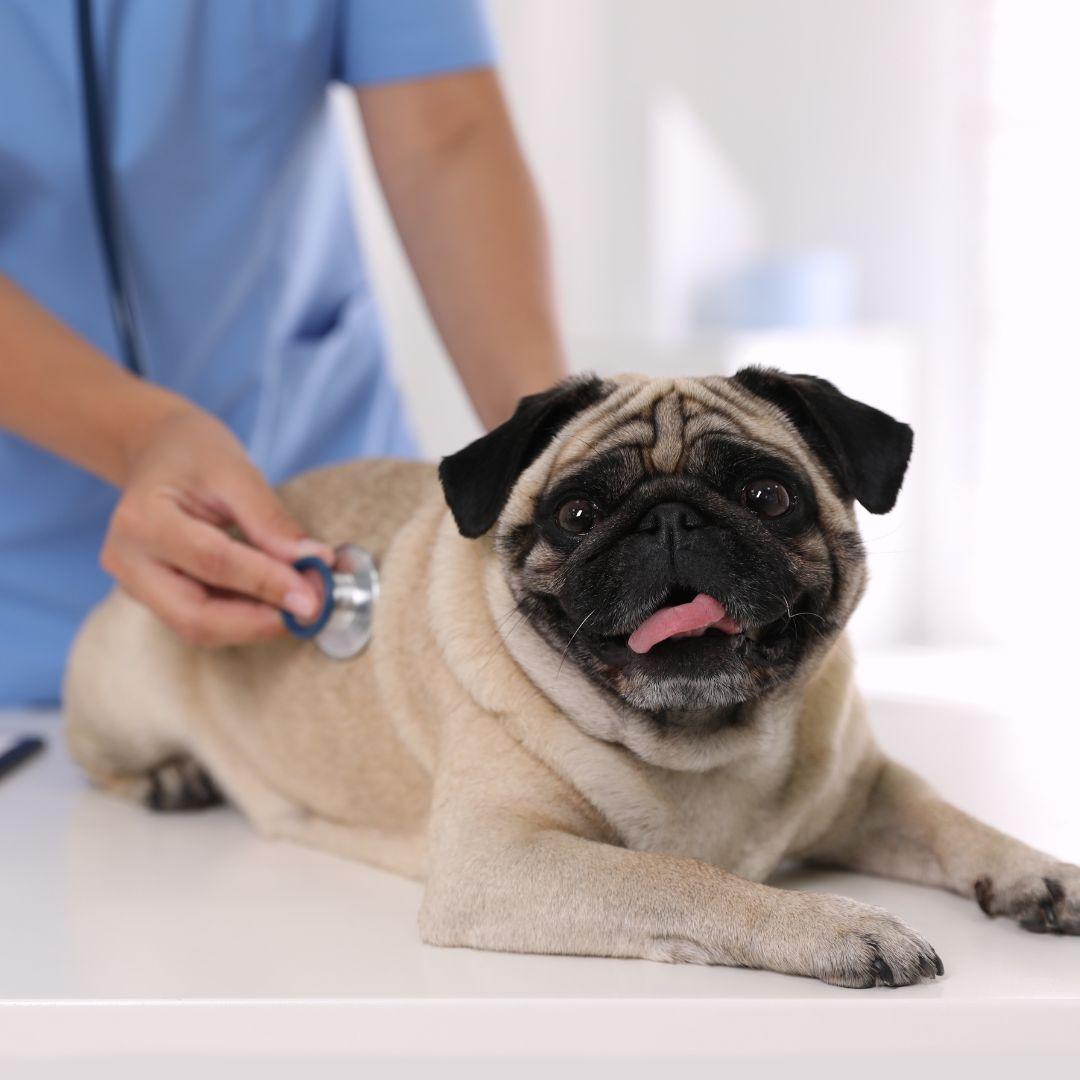
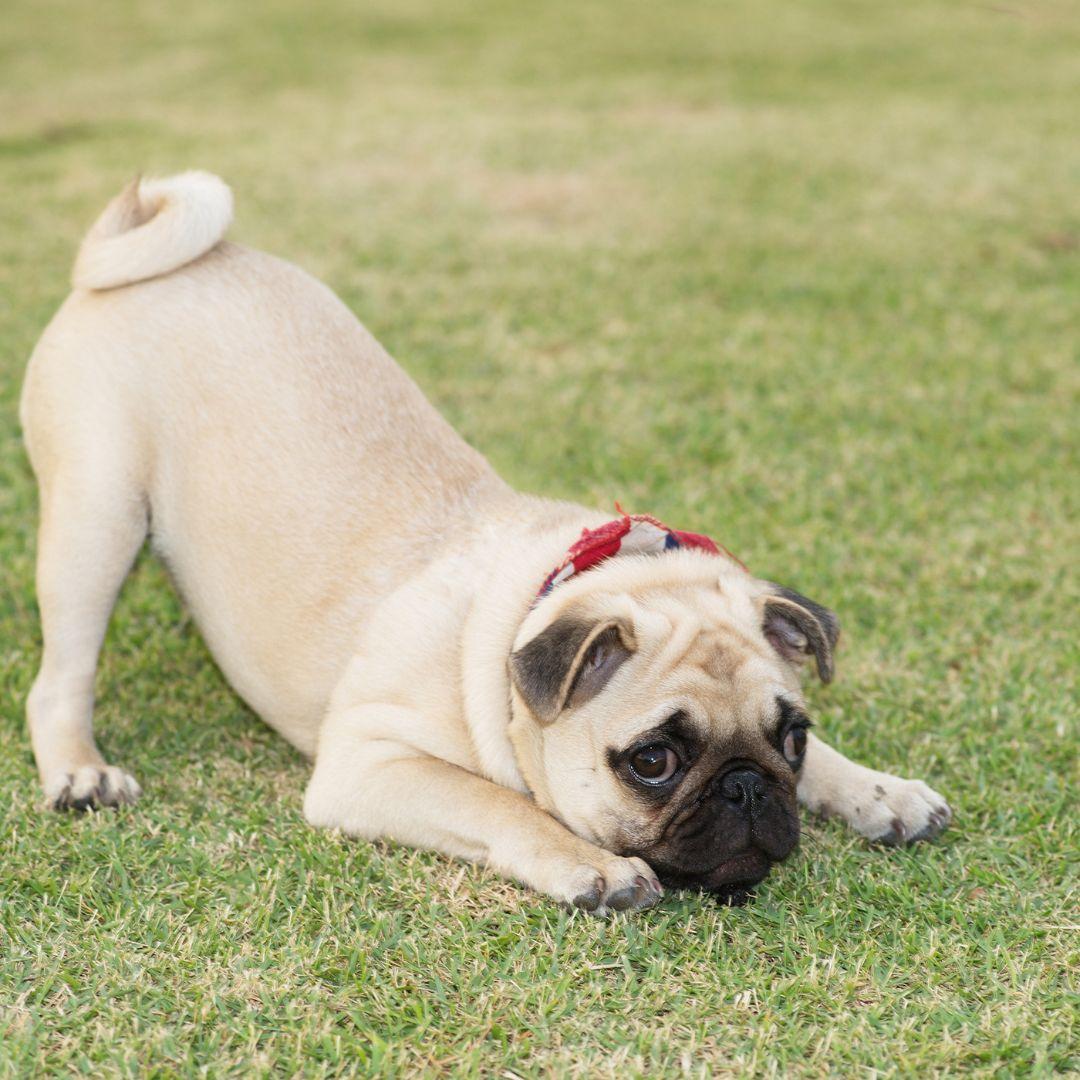
This condition occurs when restricted blood flow to the top of the femur causes considerable pain for your dog, and if left untreated the disease can result in the breakdown of the femur and subsequent arthritis.
Your dog will likely begin to show signs and symptoms that they are in discomfort, such as avoiding using or putting weight onto their affected leg, limping, and it will be obvious that they are experiencing pain in some capacity.
If you notice any of these symptoms in your dog it is vital to get them seen by a veterinary professional as soon as possible to rule out other conditions. Your vet will be able to advise you on the next best course of action for treating the condition, which may include undergoing surgery to remove the part of the bone that has died.
Pugs are a super adaptable breed, meaning that they can live most places with most people. They are particularly suited to families with children, thriving on playtime, love and affection, being part of a larger family who has plenty of time to give them attention will be their happy place.
Other dogs or pets in the house don’t tend to pose an issue for Pugs, and ensuring that your dog is properly socialized from a young age will help reduce the risk of them developing aggressive or territorial behaviors. Due to their small size they fit neatly into smaller houses or apartments, not needing huge amounts of space in order to live comfortably.
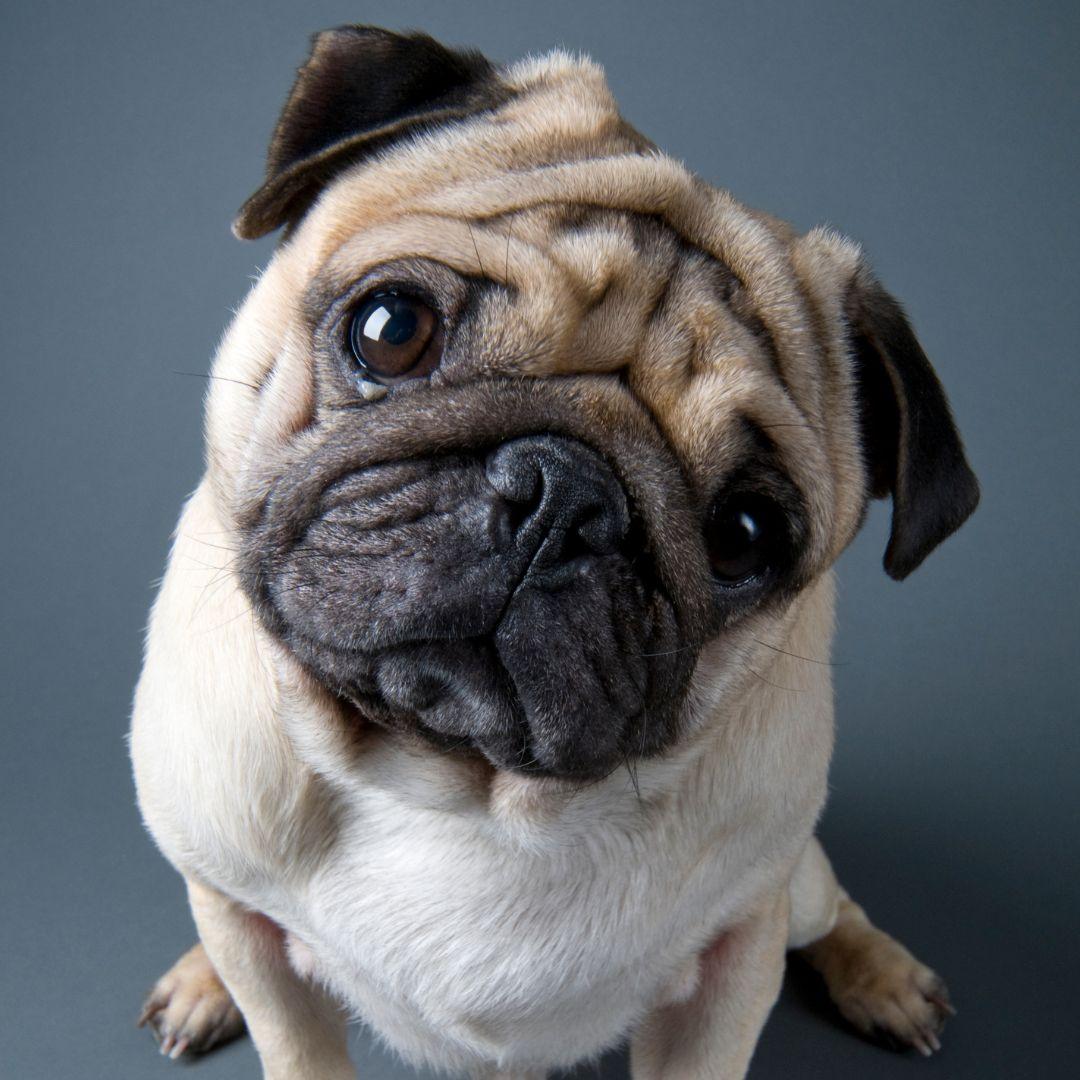

The most important thing when considering bringing a Pug into your home is to go and visit them in person. Flat-nosed breeds in particular can come with a whole host of health issues, and it is important to make sure that you are getting them from a reputable breeder where they have been properly cared for. Unfortunately there are a lot of dog breeders out there who are just in it for the money, and therefore do not keep up to date with their Pug’s health or behavioral training.
Meeting your puppy in person will not only allow you to check on the state of their health; it also gives you a chance to see if you have a connection. It is often said that the dog chooses the owner, and so going to see a puppy face to face will ensure that you are both the right fit for each other.
It is likewise often encouraged that new dog owners rescue rather than buy, as there are numerous dogs that for various reasons need a new and loving home. Giving a pup a second chance at life is rewarding for both dog and owner, and there can be nothing better than seeing a pooch who had a tricky start in life come into their own.
The price of a Pug puppy will vary depending on area and breeder, and so if you have a strict budget it’s important to do your research before committing to a specific dog.
In the US, different regions boast varying Pug prices, and again this will depend on the breeder. Here is a general pricing guide of the amounts you can expect to pay for a Pug throughout America:
Northeast - $1000 - $2500
South - $800 - $2000
Midwest - $800 - $1800
West - $1200 - $3000 in more urban areas, and between $800 - $1500 in less urban areas
Pacific Northwest - $1000 - $2200
It is also important to take into account the general living costs of owning a dog, from food and bedding and toys, to vet bills and pet insurance. Pets are not cheap and so ensuring that you are in a place where you can commit to a dog financially is vital.
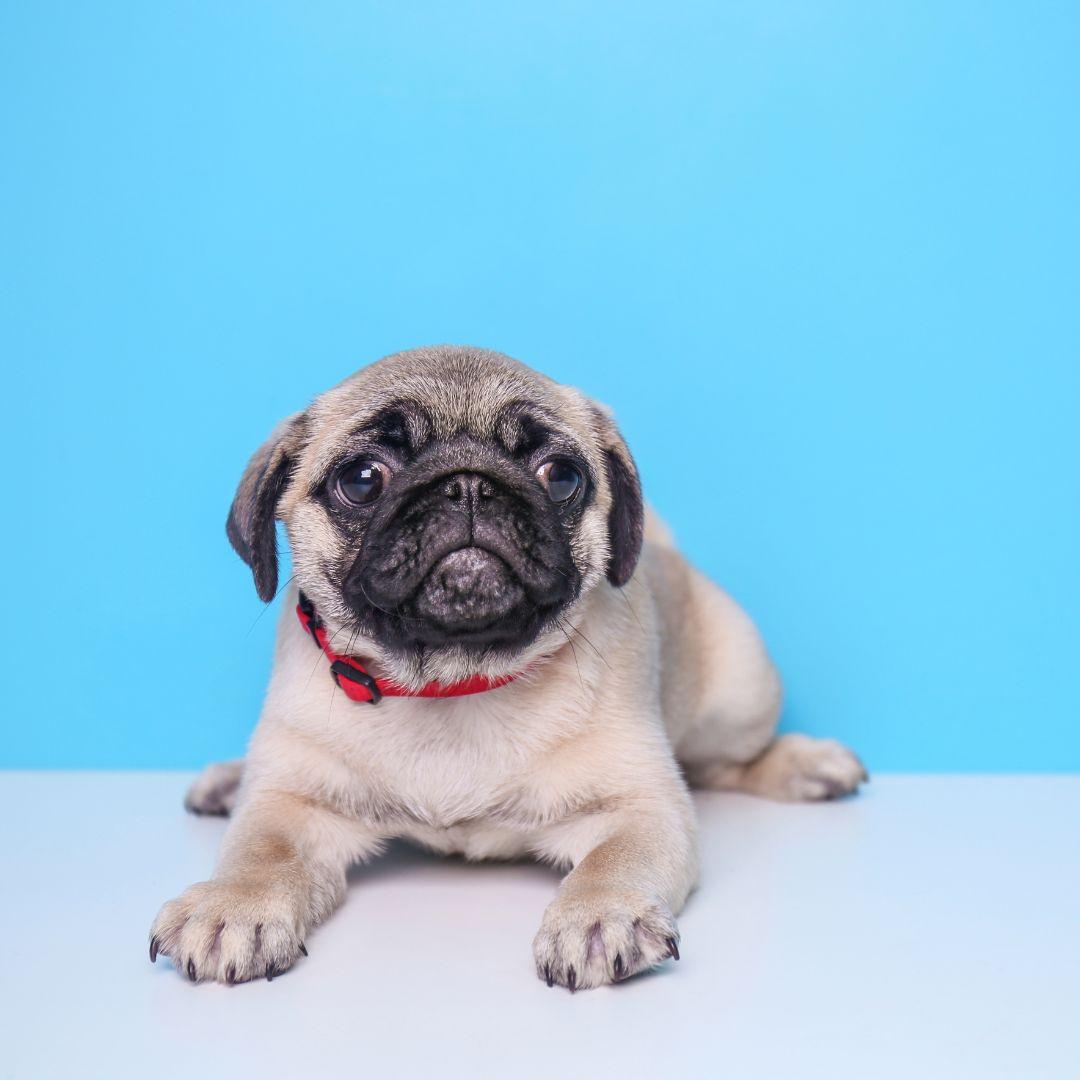
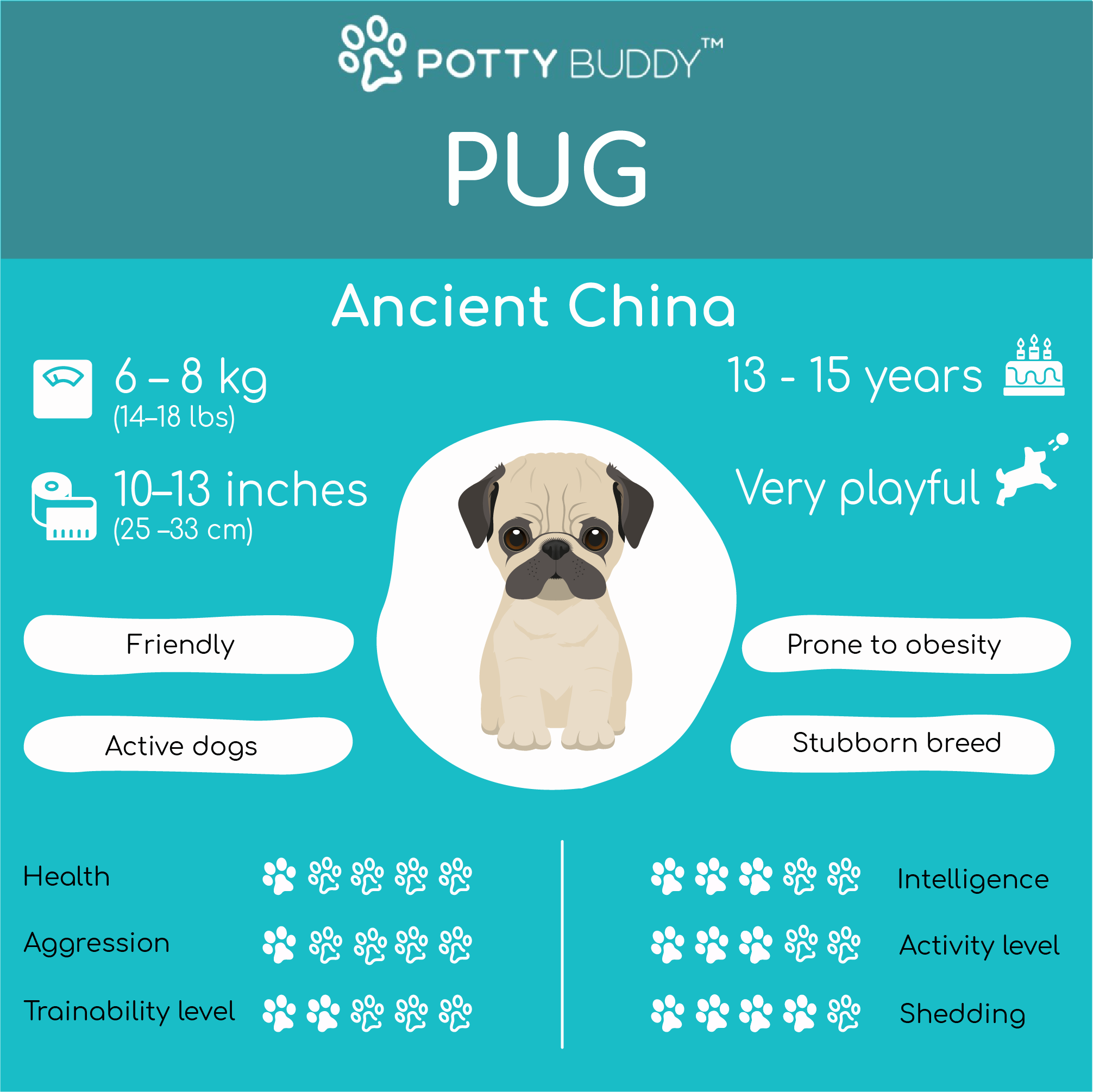
Follow Us On
Check Out Our Most Popular Content